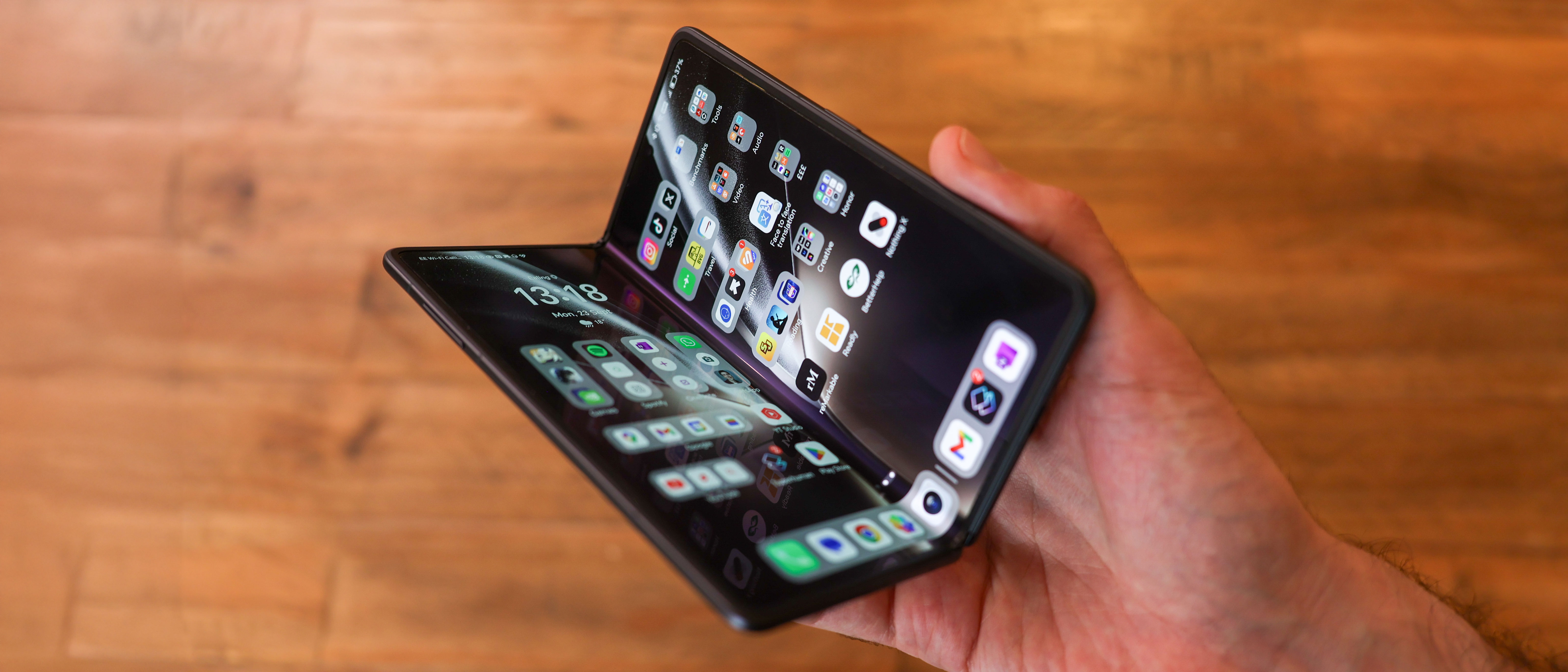Digital Camera World Verdict
The Honor Magic V3 isn't the most reliable foldable camera out now – that title goes to the OnePlus Open – but its Studio Harcourt portrait mode and telephoto reach shine, the slender design is a joy to use day-to-day and its price undercuts that of the Galaxy Z Fold 6 and Pixel 9 Pro Fold, both of which pack inferior cameras and lower capacity batteries and storage. In summary, all things considered, the Magic V3 is the new foldable to beat.
Pros
- +
Very thin and light for a foldable
- +
Dramatic, high-quality portrait modes
- +
Software upgrades over Magic V2
- +
Undercuts Google and Samsung foldables
Cons
- -
Expensive compared to non-foldables
- -
Inconsistent camera performance
- -
Occasional software gripes
Why you can trust Digital Camera World
The Honor Magic V3 is an exceptionally thin foldable that undercuts its latest competitors – the Google Pixel 9 Pro Fold and Samsung Galaxy Z Fold 6 – despite packing a slimmer design and superior specs in key areas like camera, battery, and charging. The Magic V3 also enjoys a Studio Harcourt portrait mode introduced on the Honor 200 Pro, tuned by the famous Parisian photography house, plus flagship power and two large displays.
Our current favourite big-screened foldable isn't made by Google or Samsung, but by OnePlus. The Hasselblad co-branded OnePlus Open was the first foldable to feature a flagship-grade photography experience, so we're excited to see if Honor can dethrone the Open with its new Magic V3, which had its global launch at IFA 2024 in Berlin recently.
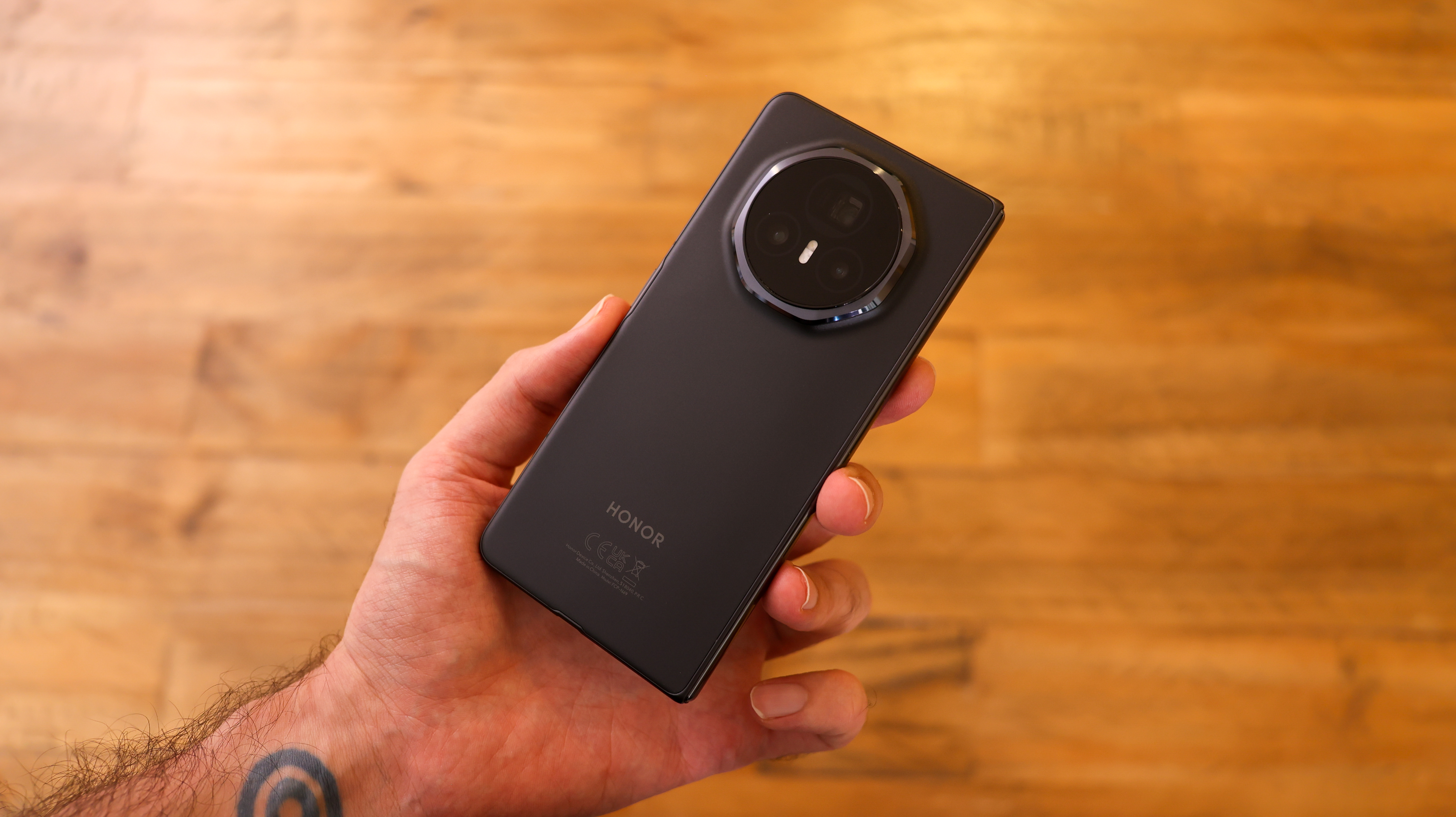
While the Magic V3's primary camera spec matches that of the Z Fold 6, it pulls ahead as a system thanks to superior secondary cameras, which include a 3.5x periscope telephoto camera and an autofocusing ultra-wide camera. Holding the title of the thinnest and lightest foldable phone in the West, there's no getting around the fact the Magic V3 is impressive, but is it the best foldable phone of 2024?
Honor Magic V3 design
The Honor Magic V3 builds on the slim, light, foldable the Magic V2 was, but adds a more impressive camera mix around the back while shaving off some thickness and weight. Unlike the boxy Galaxy Z Fold 6 and comparatively bulbous Google Pixel 9 Pro Fold, the Magic V3 is sleek and mature-looking.
Not including the camera bump, the Magic V3 is 9.2mm thin when closed (versus the 12.1mm Z Fold 6 and the 10.5mm Pixel 9 Pro Fold. It's the clear thinner-winner in the West, though the China-only Xiaomi Mix Fold 4 isn't far behind at 9.5mm.
In the hand, therefore, a closed Honor Magic V3 feels very comfortable to hold, and with the phone's matte frame versus the polished frame of its predecessor, it's also much easier to grip. It's also worth noting that the Magic V3's weight of just 230g undercuts the 239g Z Fold 6 and 257g Pixel 9 Pro Fold.
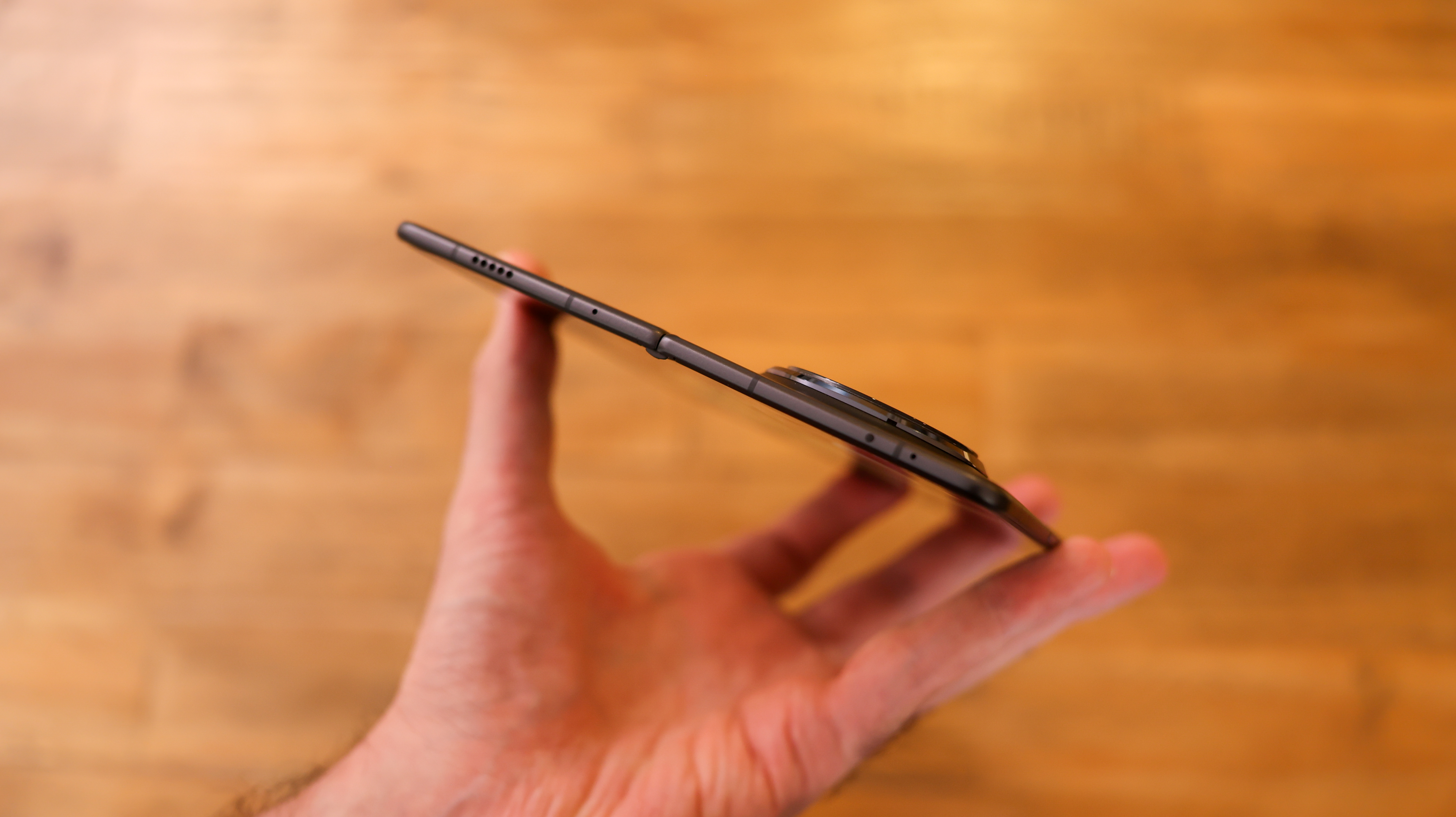
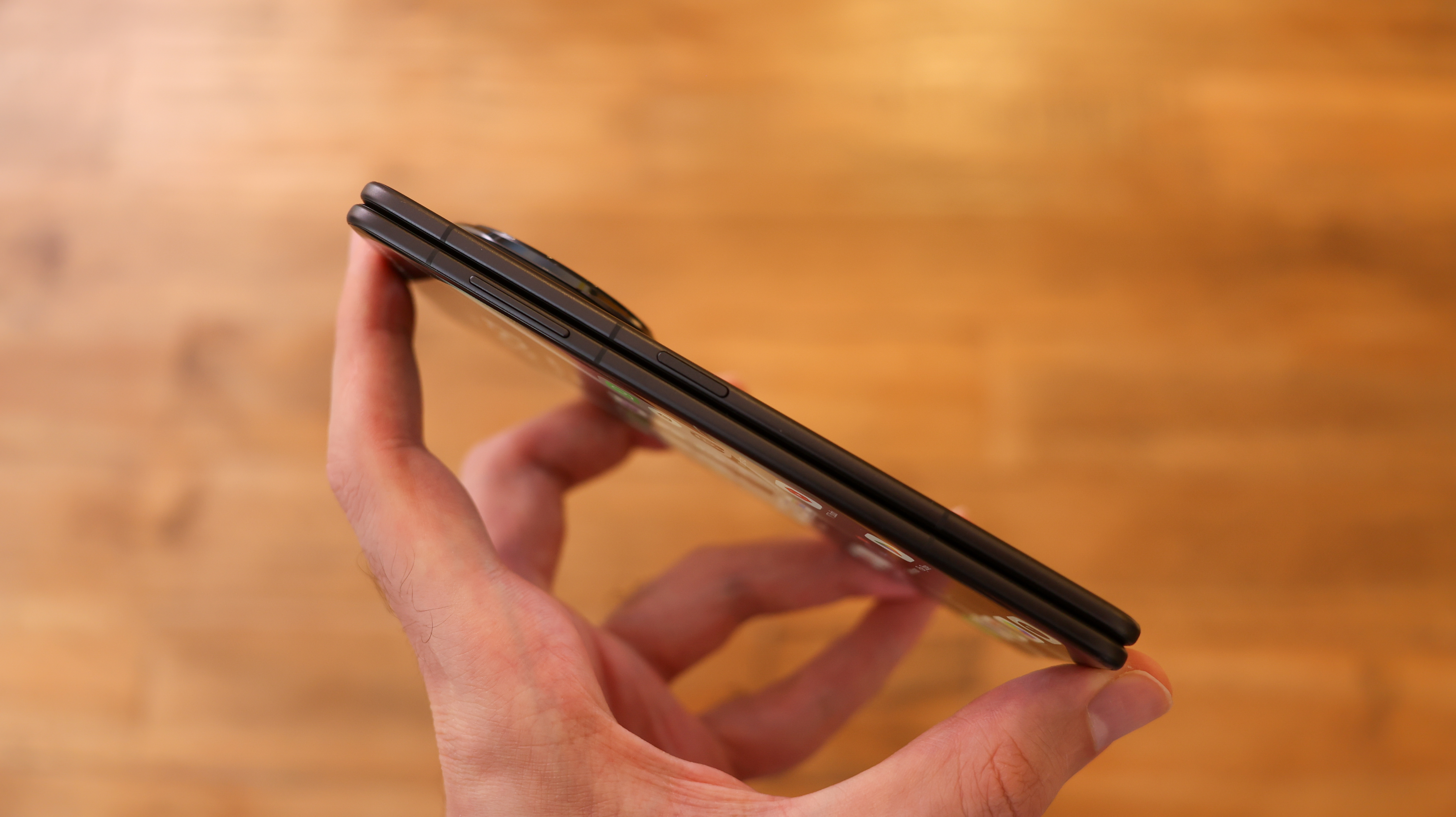
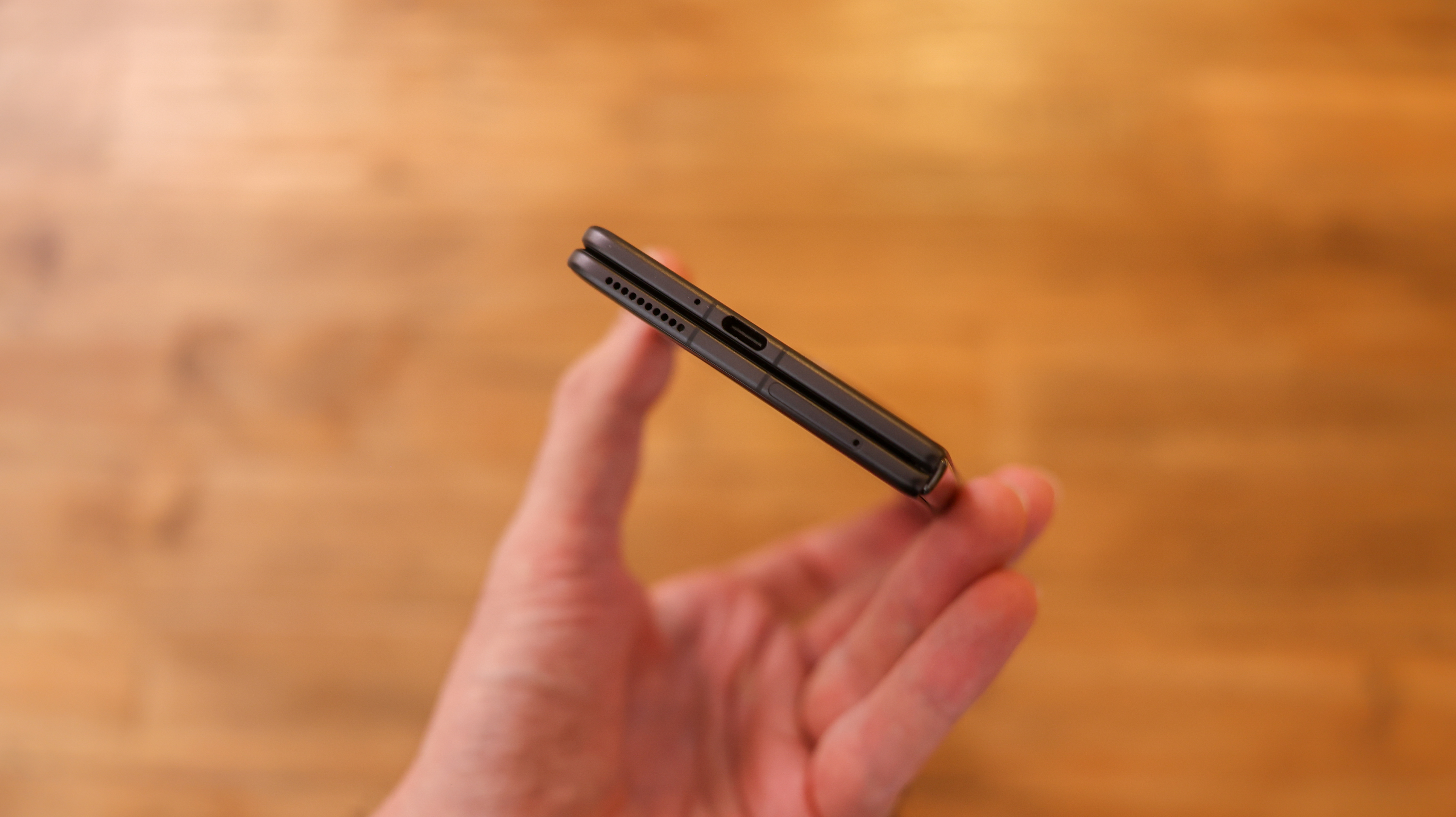
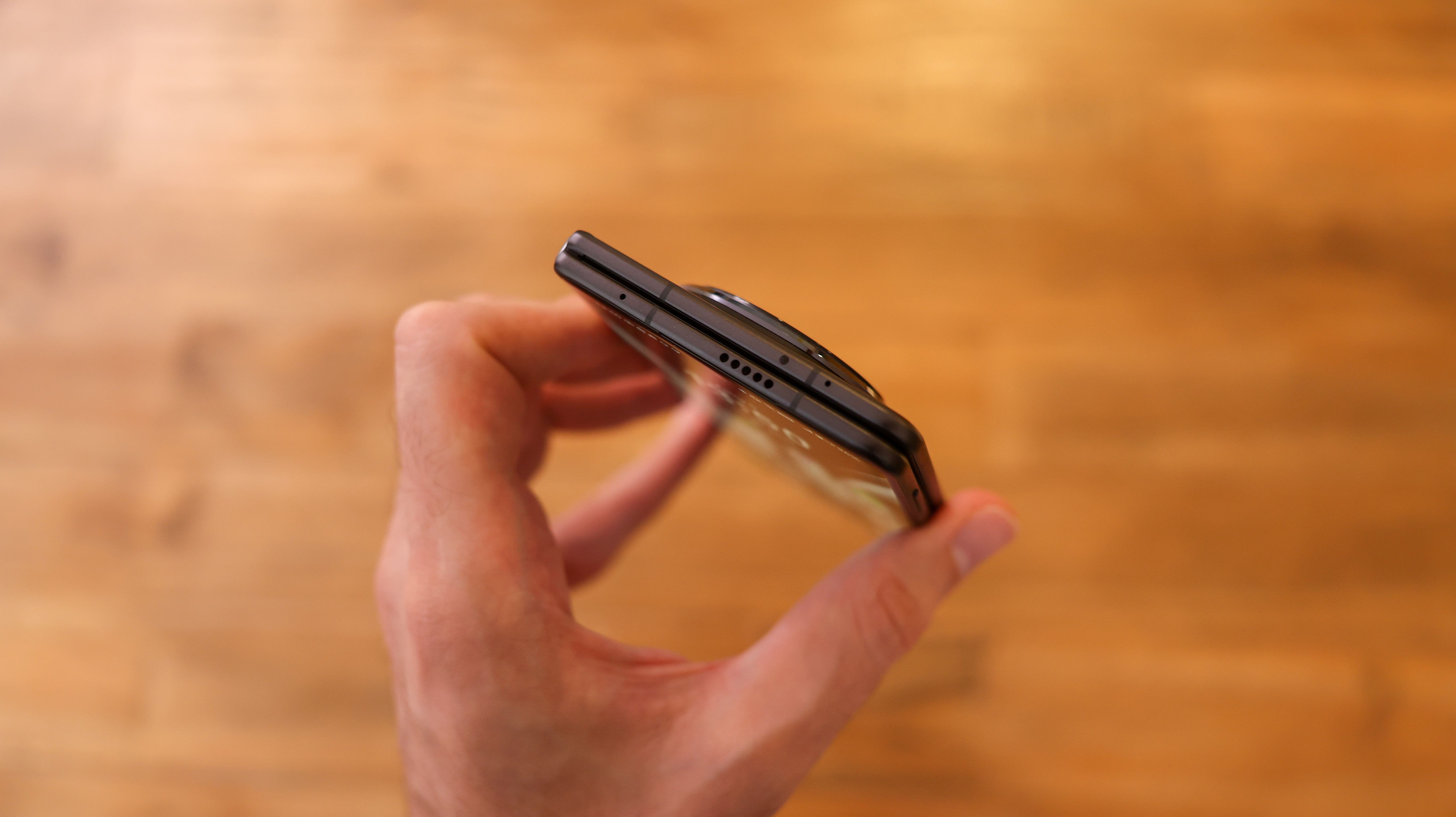

A small bugbear with Honor foldables is that they put the power and volume buttons on opposite sides when open which isn't particularly intuitive for one-handed use. Otherwise, day-to-day navigation was a breeze – the power button is also a responsive fingerprint scanner, the USB-C port and SIM slot are at the bottom of the phone and the speakers are on the left side when the Magic V3's open.
One area that clearly takes a hit to achieve the Magic V3's slimness is the hinge sturdiness. While the Z Fold 6 is one of the only foldables that can hold its position throughout almost its entire range, Honor's V2 and V3 both have more wobble and less uniform resistance as they unfold completely. On the plus, the Magic V3 unfolds completely flat and doesn't feel fragile.
With IPX8 water resistance, it can be submerged in 2.5m of fresh water for 30 minutes and ships with a pre-fitted screen protector and a case in the box, though there's no charging brick if you're picking it up in Europe.
Available in two glass colors, Black and Green, and one vegan leather finish, Reddish Brown, the Honor Magic V3 is a great-looking, feeling foldable that is a joy to use.
Honor Magic V3 screens
The Honor Magic V3's cover display is a comfortable 6.43 inches. With its less tall aspect ratio than the Galaxy Z Fold 6, the Magic V3 feels more like a traditional phone when closed, resulting in a less cramped typing experience.
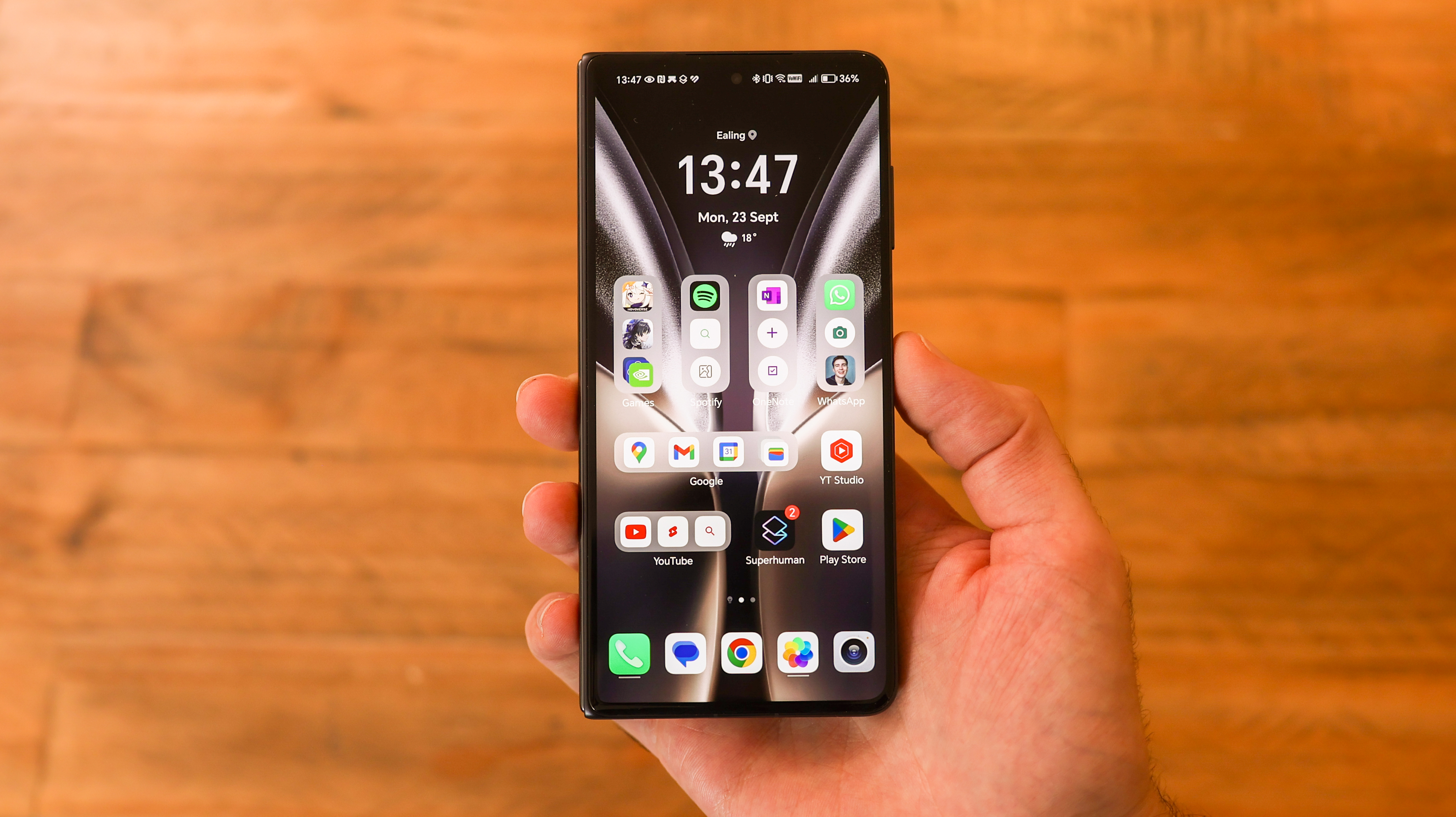
The outer display quality is also excellent, with a 120Hz refresh rate and a peak brightness of up to 5000 nits when playing back HDR content. It also has a pixel density of 402 pixels per inch, so everything on-screen looks sharp, and whether indoors or outdoors, making out content was never a challenge.
As for the inner display, it's a 7.92-inch, almost square panel that gives you plenty of room for anything that's cramped on a traditional phone display, like spreadsheets and PDFs. With a peak brightness of 1800 nits, the unfolded screen isn't quite as bright as the cover screen, and foldable displays also attract fingerprints more readily than glass panels, which obstruct visibility when displaying dark content.
All this means if you're outdoors, you're better off using the cover display, though both are extremely fit for purpose.
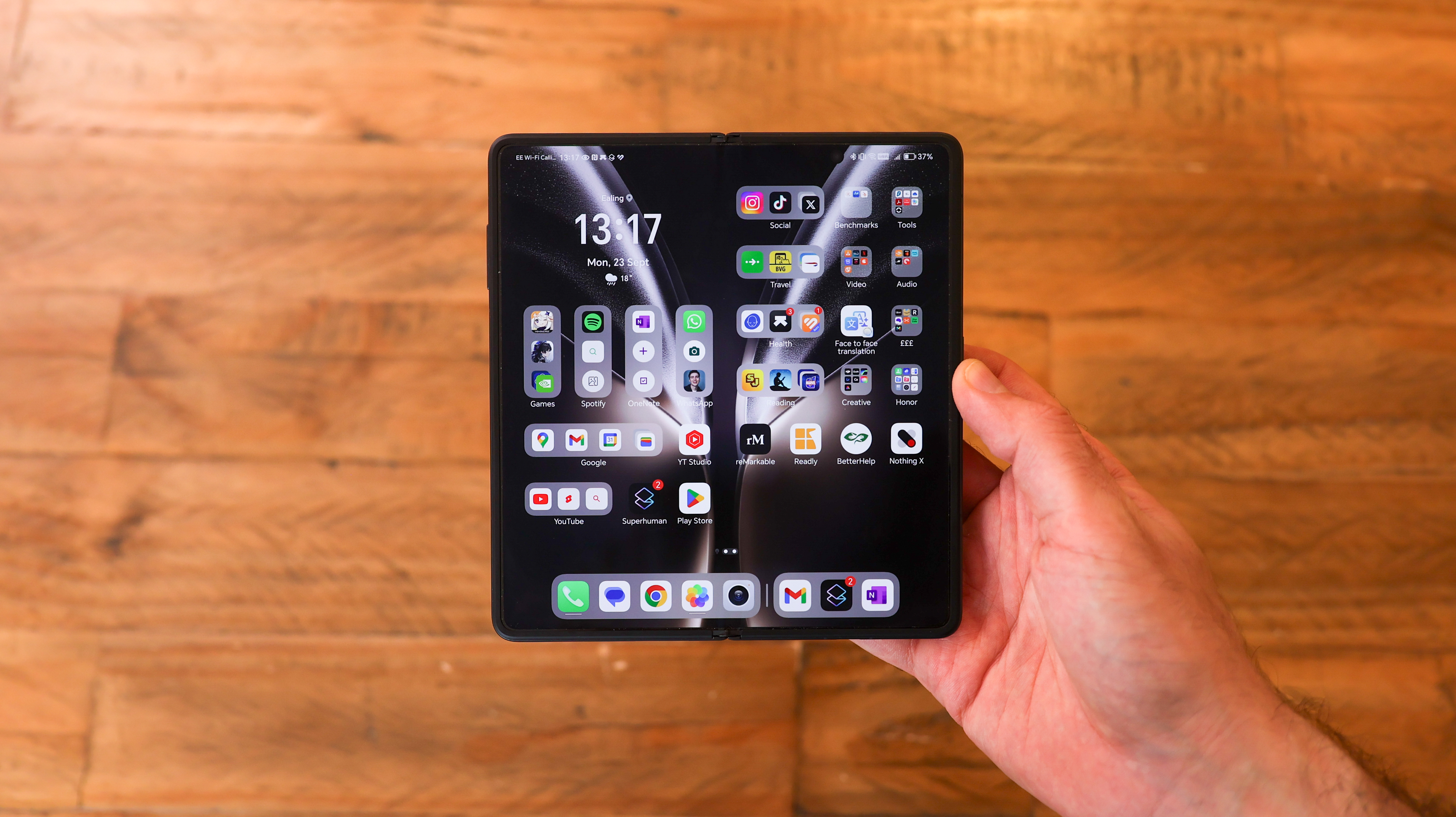
Every foldable has a crease that runs down the middle, and the Magic V3's is very modest when compared to the Z Fold 6. Head-on, it's unnoticeable when the screen's displaying anything remotely bright. The Magic V3 also supports pen input when using a stylus that can be bought separately. This works across both screens, though is slightly less accurate than the S Pen supported by Samsung phones.
Honor Magic V3 camera specs
The Honor Magic V3's camera is a tale of two halves, hardware and software. The phone's main camera mix consists of a wide, ultra-wide, and telephoto camera, and there are two selfie cameras, one within the cover screen and the other on the right side of the main display.
Wide camera
The 50MP wide camera on the Honor Magic V3 has a 1/1.56-inch sensor, PDAF and OIS, as well as a wide f/1.6 aperture. The sensor size might sound small for a phone of the V3's price, but it's on the larger side for a foldable, with the Google Pixel 9 Pro Fold's main camera sensor measuring in at just 1/2 inch.
Ultra-wide camera
The Honor Magic V3's ultra-wide camera dials down the resolution slightly, with a 40MP sensor. It bests the ultra-wide of the Galaxy Z Fold 6 by including autofocus, so it can capture close-up shots, and matched with an f/2.2 aperture, for objects that are 10cm or less from the lens, pulls out decent depth blur.
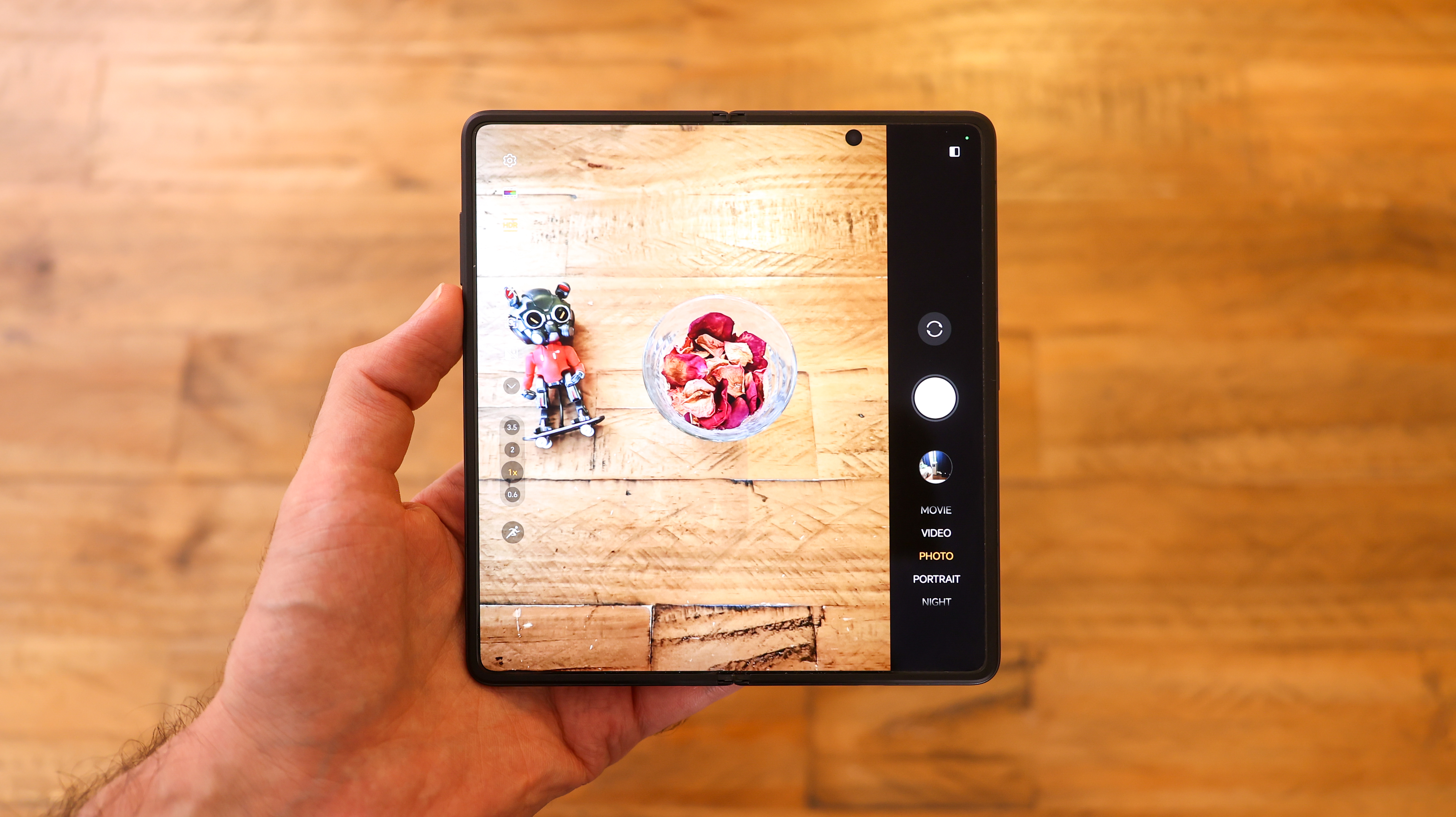
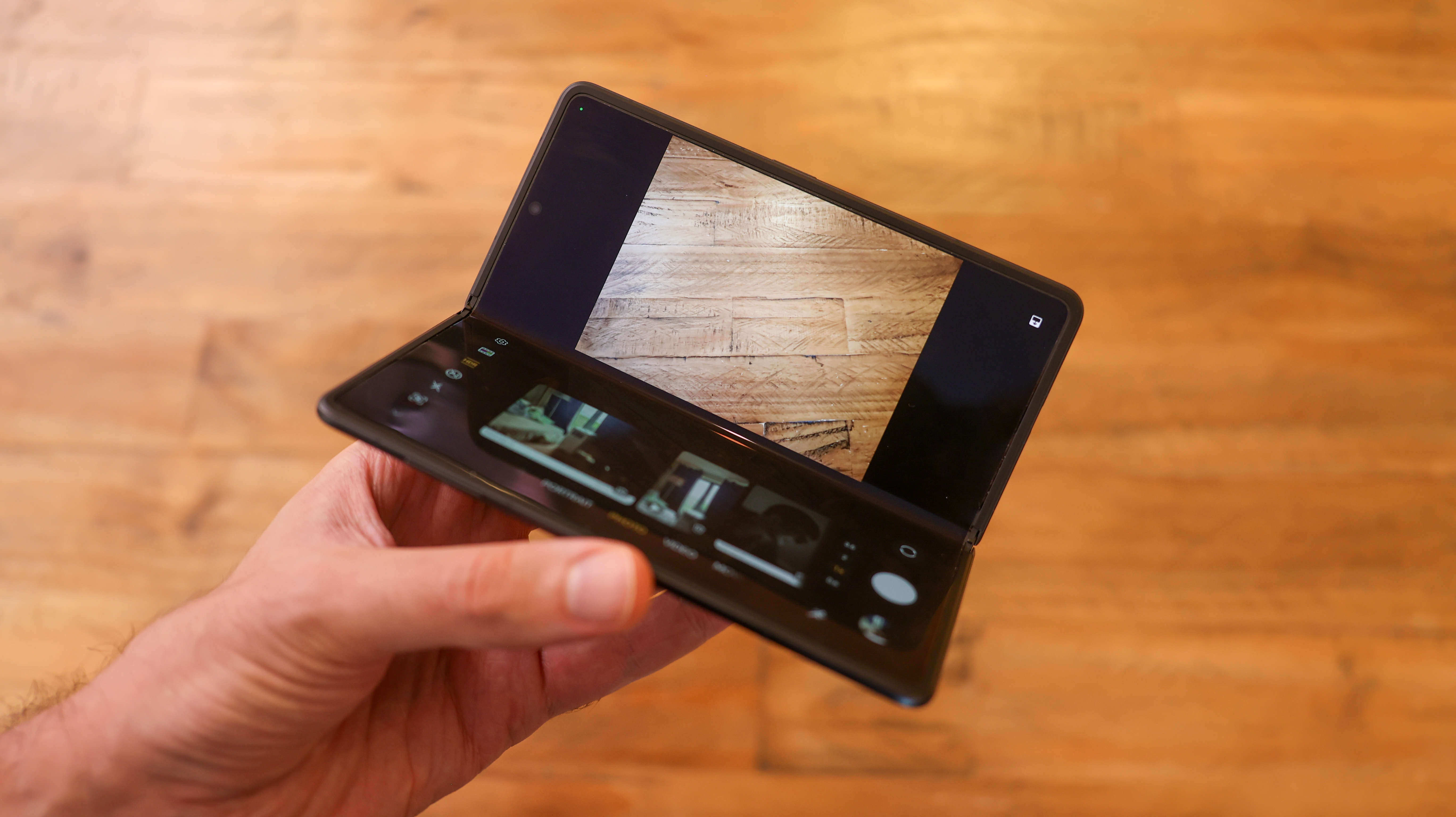
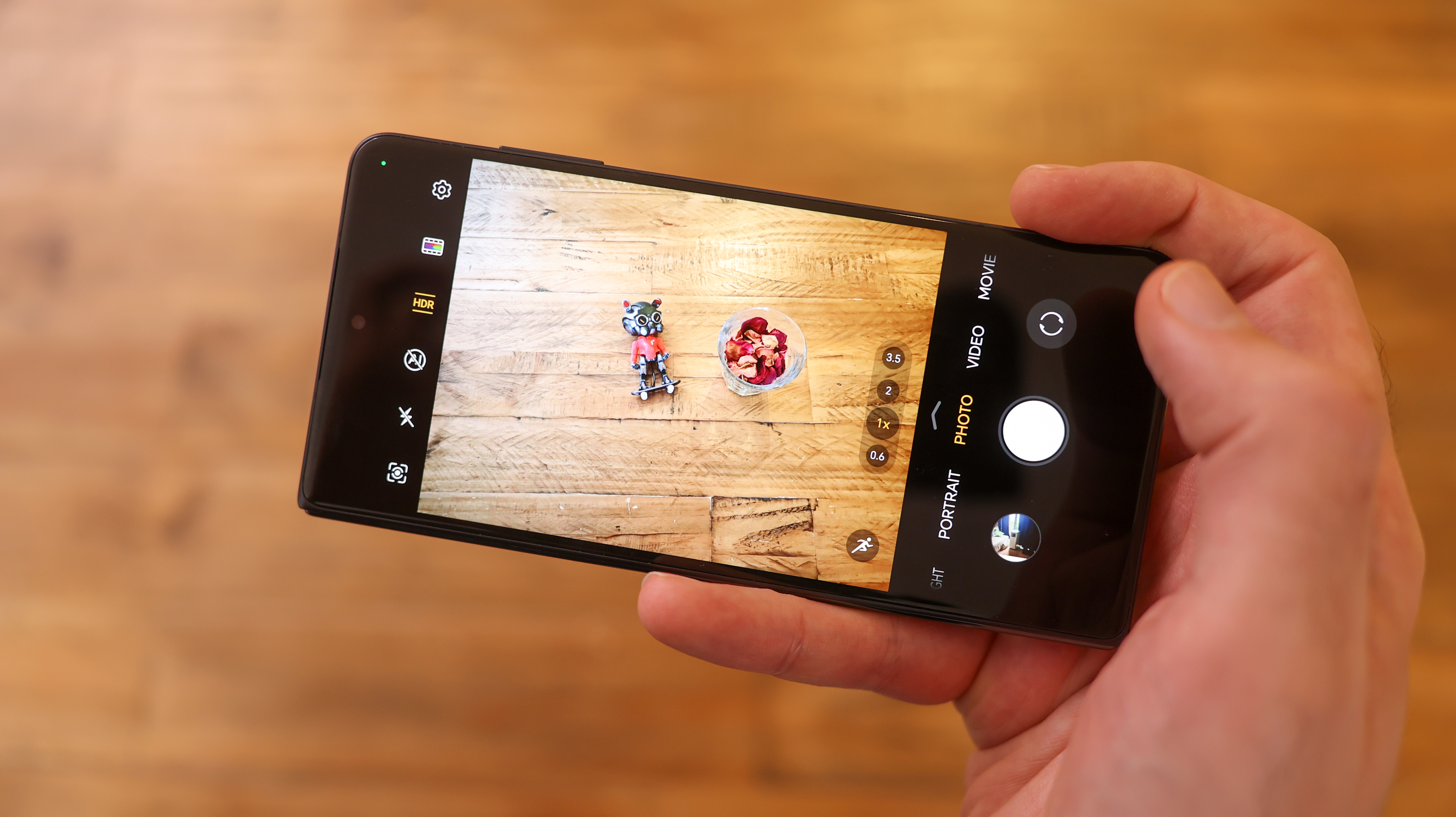
Telephoto camera
Where the Magic V3's camera really pulls ahead of Samsung is zoom, with the 50MP periscope module packing five times more pixels than the Z Fold 6's tele camera, and featuring a larger 1/2.51-inch sensor, as well as a slightly further optical reach of 3.5x.
Selfie cameras
Both of the Magic V3's selfie cameras are 20MP sensor, f/2.2 lens combinations, though one great feature of foldables is the fact you can take selfies using the primary camera by opening the phone and using the cover screen as a viewfinder. The Magic V3 supports this feature, and in our tests, is great for vlogging too.
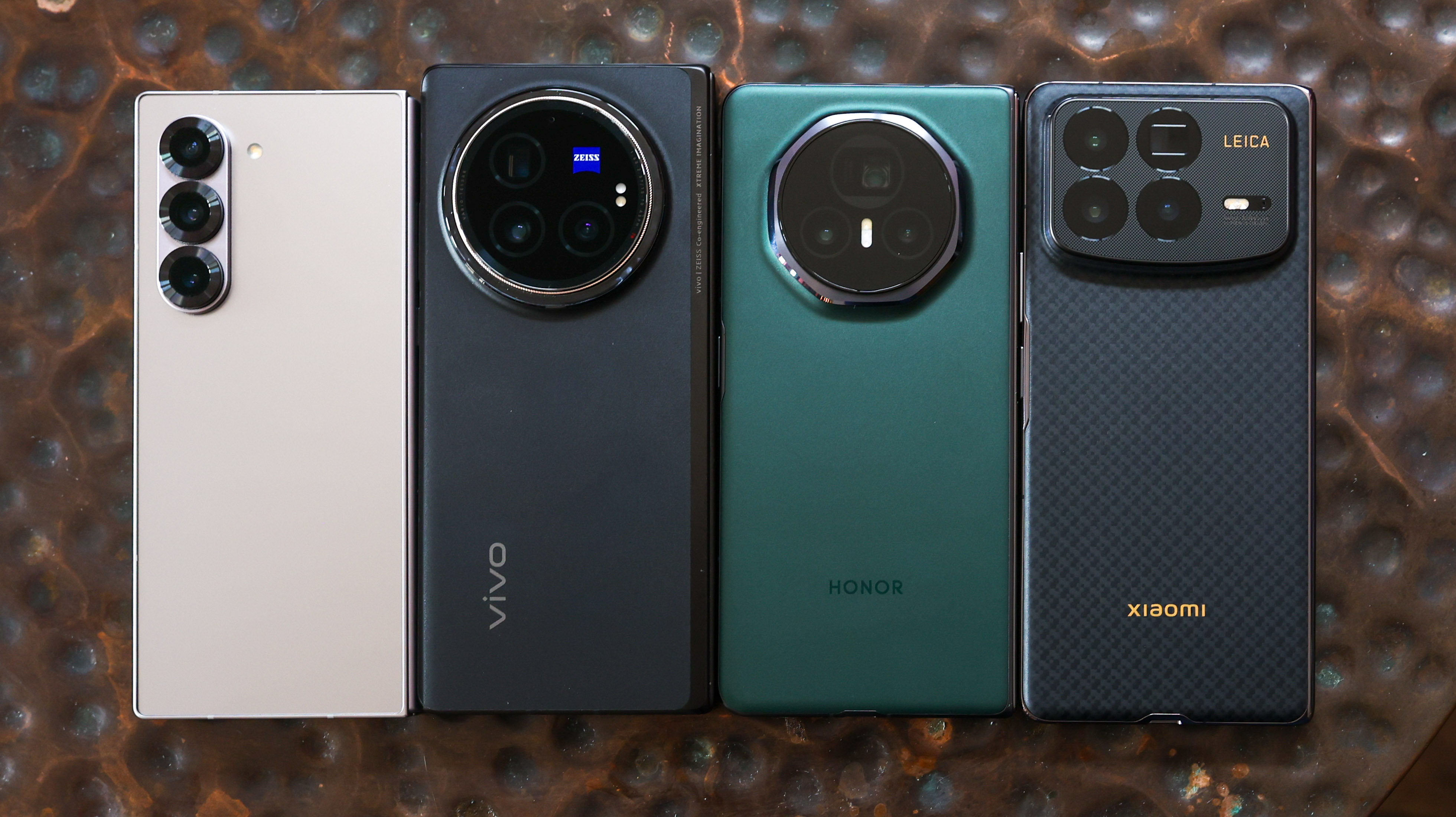
Studio Harcourt and camera software
Honor introduced its partnership with Studio Harcourt at the Paris launch of its upper-midrange Honor 200 Series. With three capture modes, Harcourt Classic, Harcourt Vibrant, and Harcourt Colour, the Magic V3 can shoot full-color or monochrome portraits that pack a unique style while also offering control over dynamic range and artificial bokeh.
Honor's camera system also excels at stopping time with its Motion-sensing Capture feature. The Magic V3 gets Honor's AI zoom, which it showcased on the Magic 6 Pro, and the phone captures 4K video at up to 60fps across all three rear cameras.
Honor Magic V3 camera review
The aspect of shooting with the Honor Magic V3 we enjoyed the most was Studio Harcourt's Classic portrait mode. On paper, we shouldn't be this enamored by what some reviewers are calling a filter, but in reality, the tuning strikes a winning balance of injecting drama back into mobile photography. It captures real highlights and shadows – while simultaneously producing photos we wouldn't have thought to take without it. You can see some examples of photos shot using the mode below.

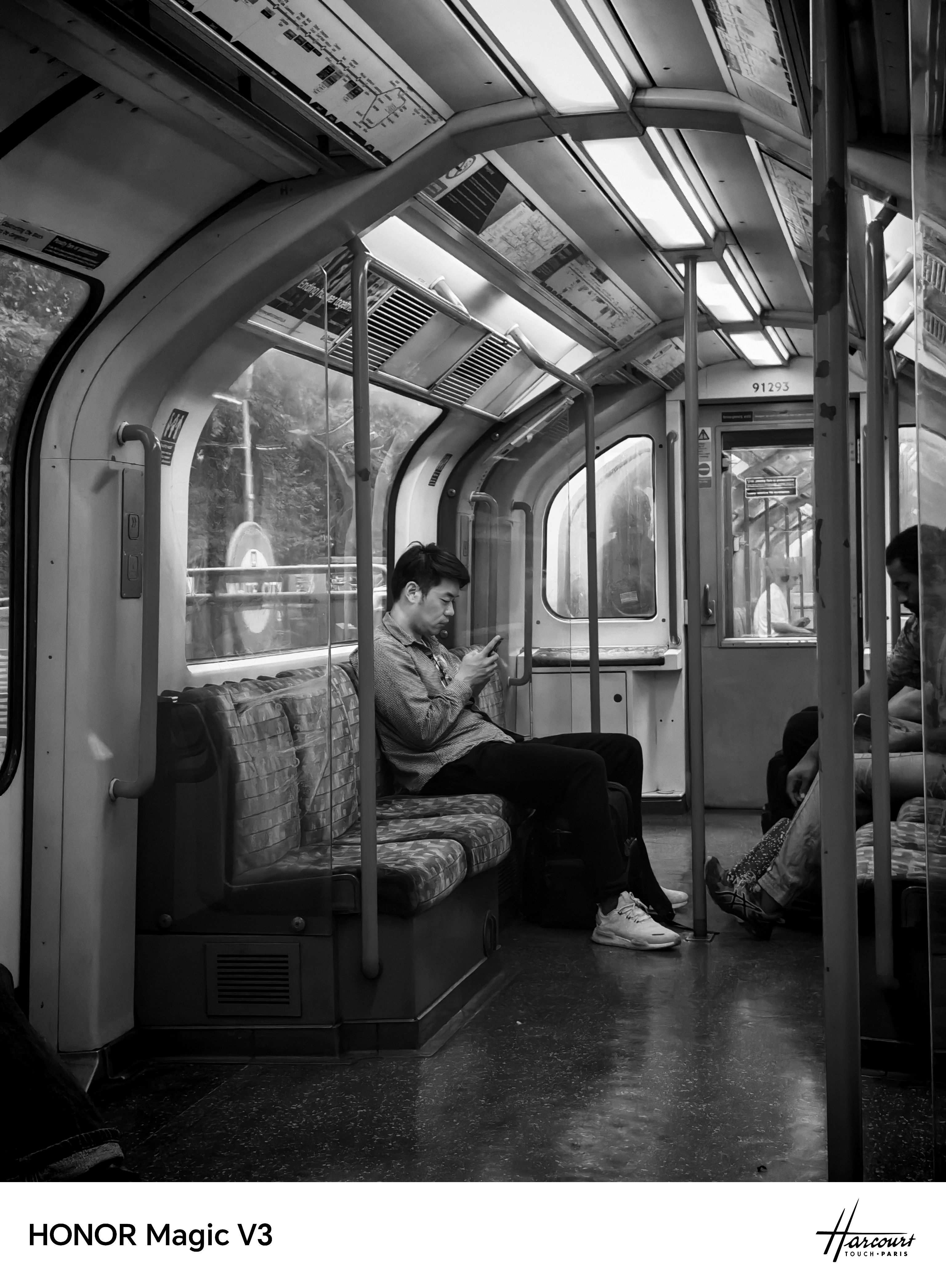
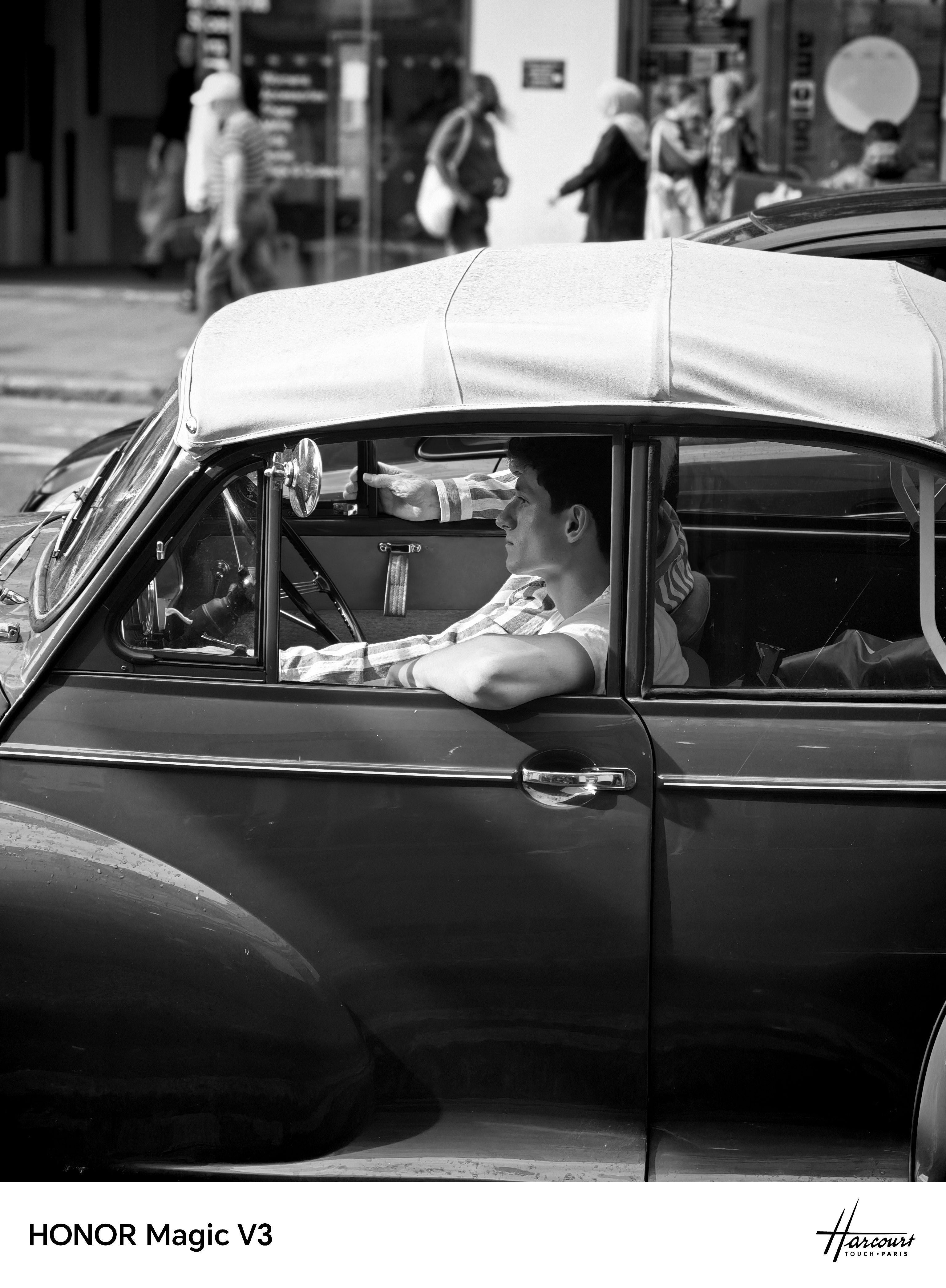
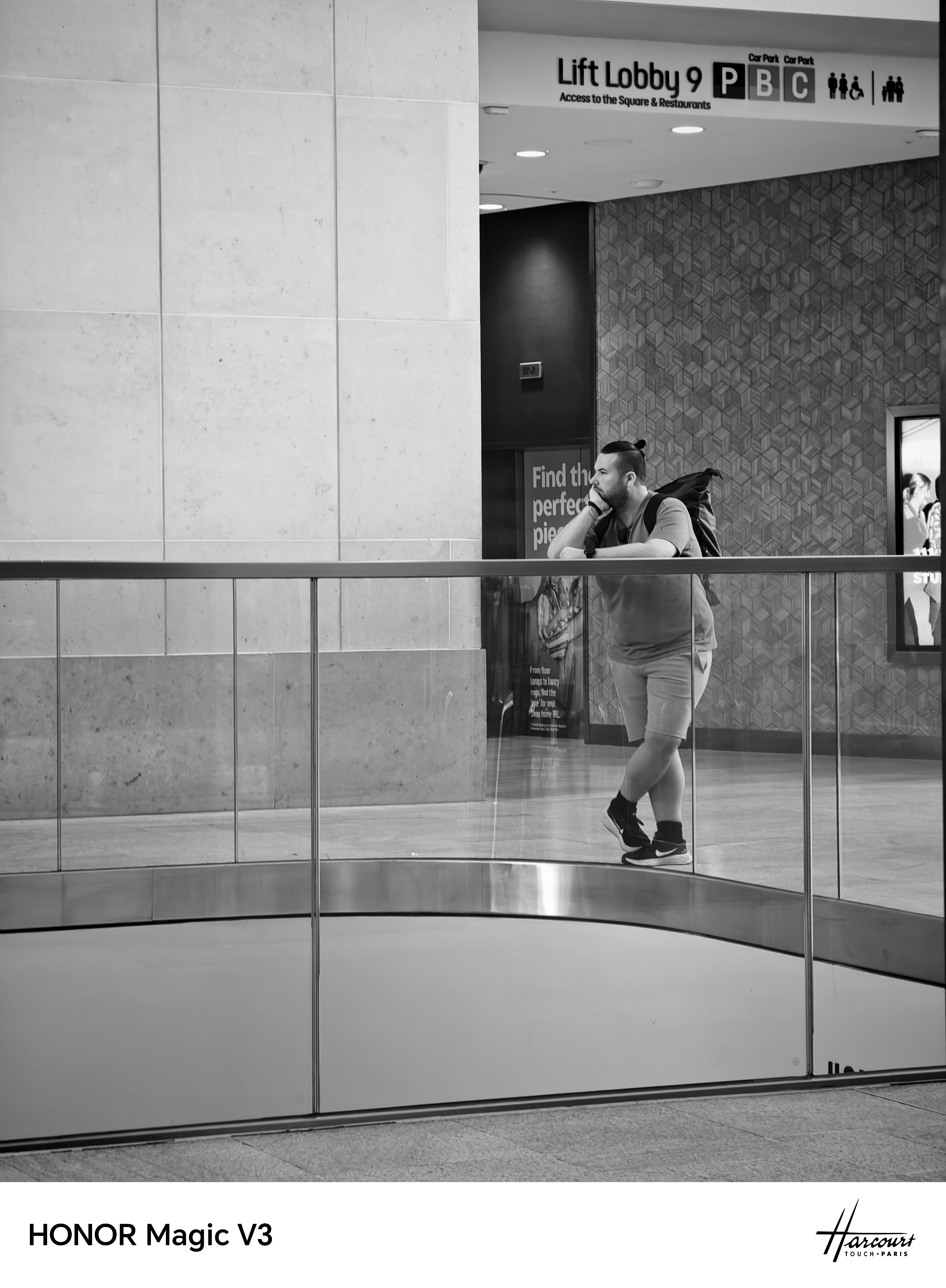
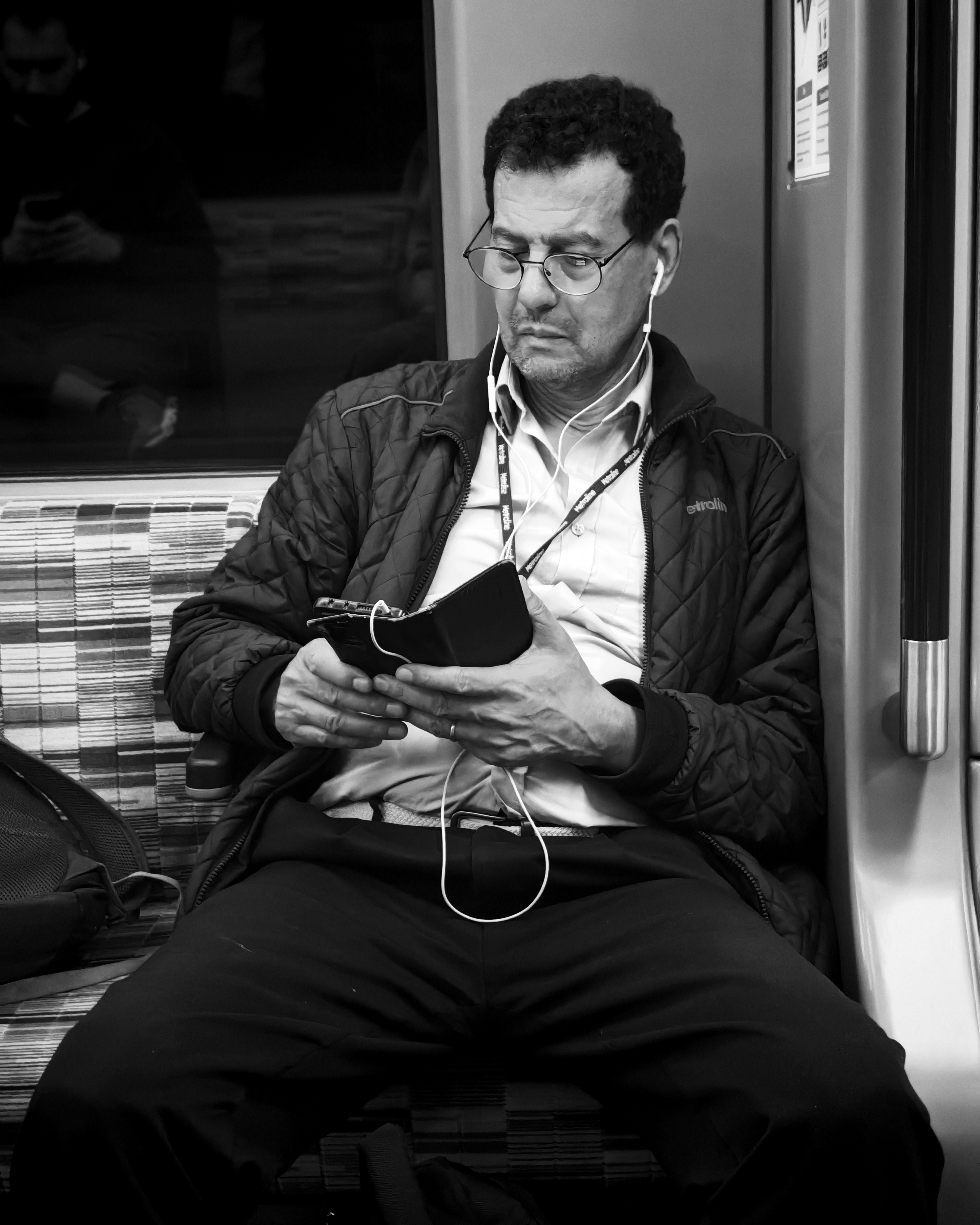

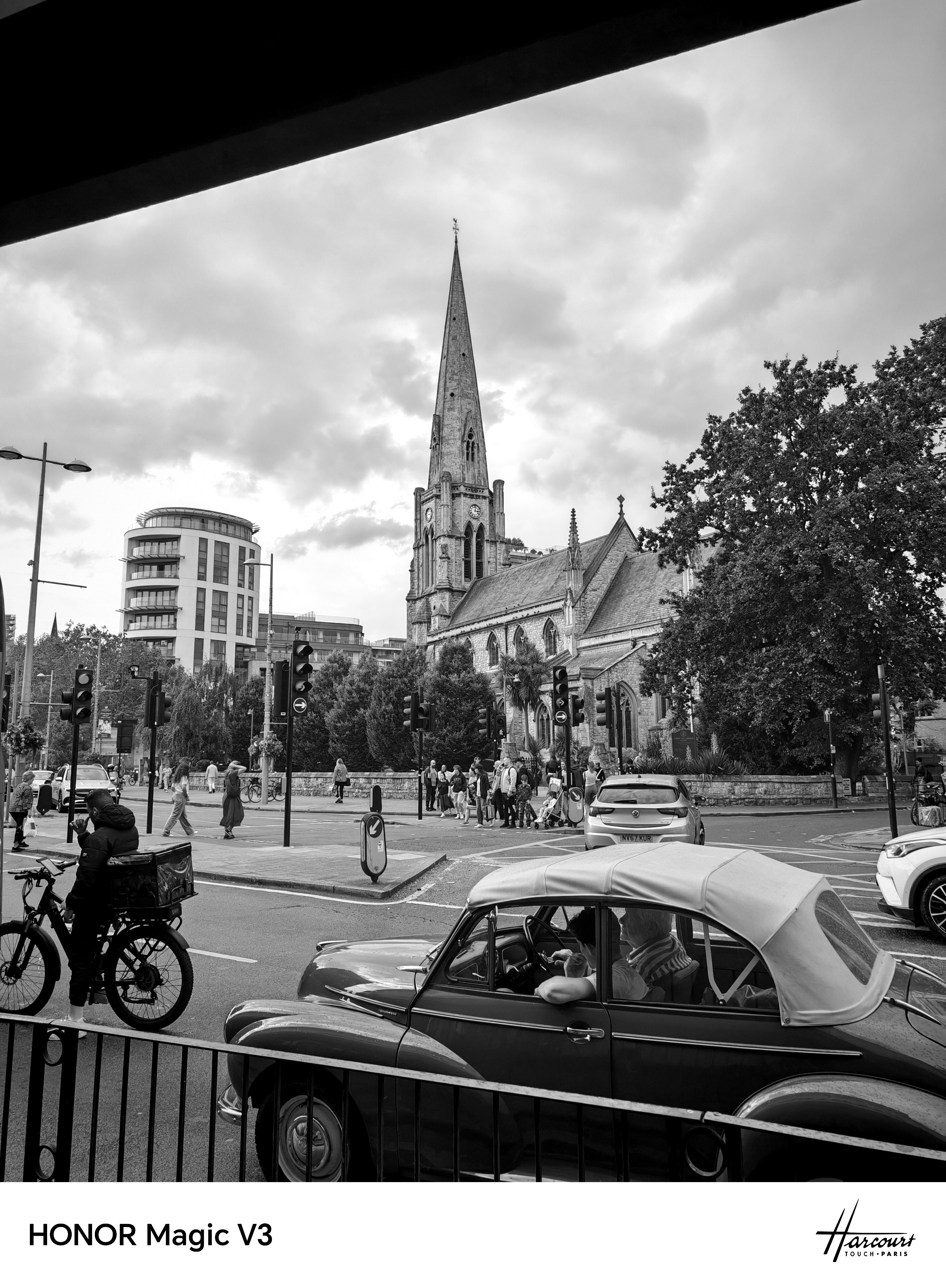
Above: gallery of images we shot with the Studio Harcourt Classic portrait mode
The overall picture quality of the Magic V3 is very similar to what we've seen in the past from Honor phones – competitive but inconsistent between cameras – though generally speaking, the V3 is near the top of the foldable pack. We still prefer the OnePlus Open's camera system, but the V3 isn't far behind.
Detail is strong across all three cameras, and by adding autofocus to the ultra-wide camera and a 30-40cm nearest focus distance to the telephoto, Honor adds much-needed versatility. This also introduces natural bokeh across all three cameras.
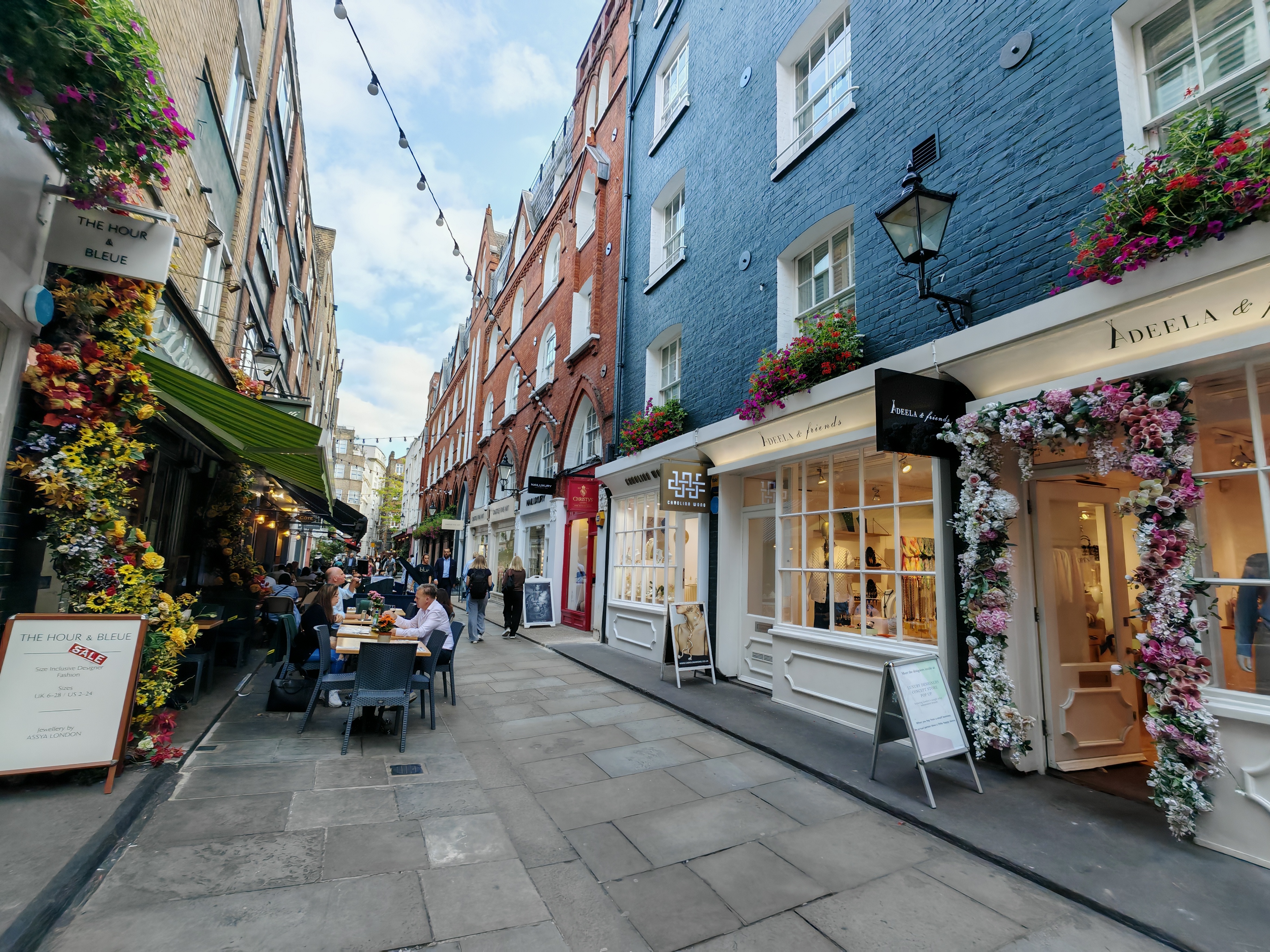
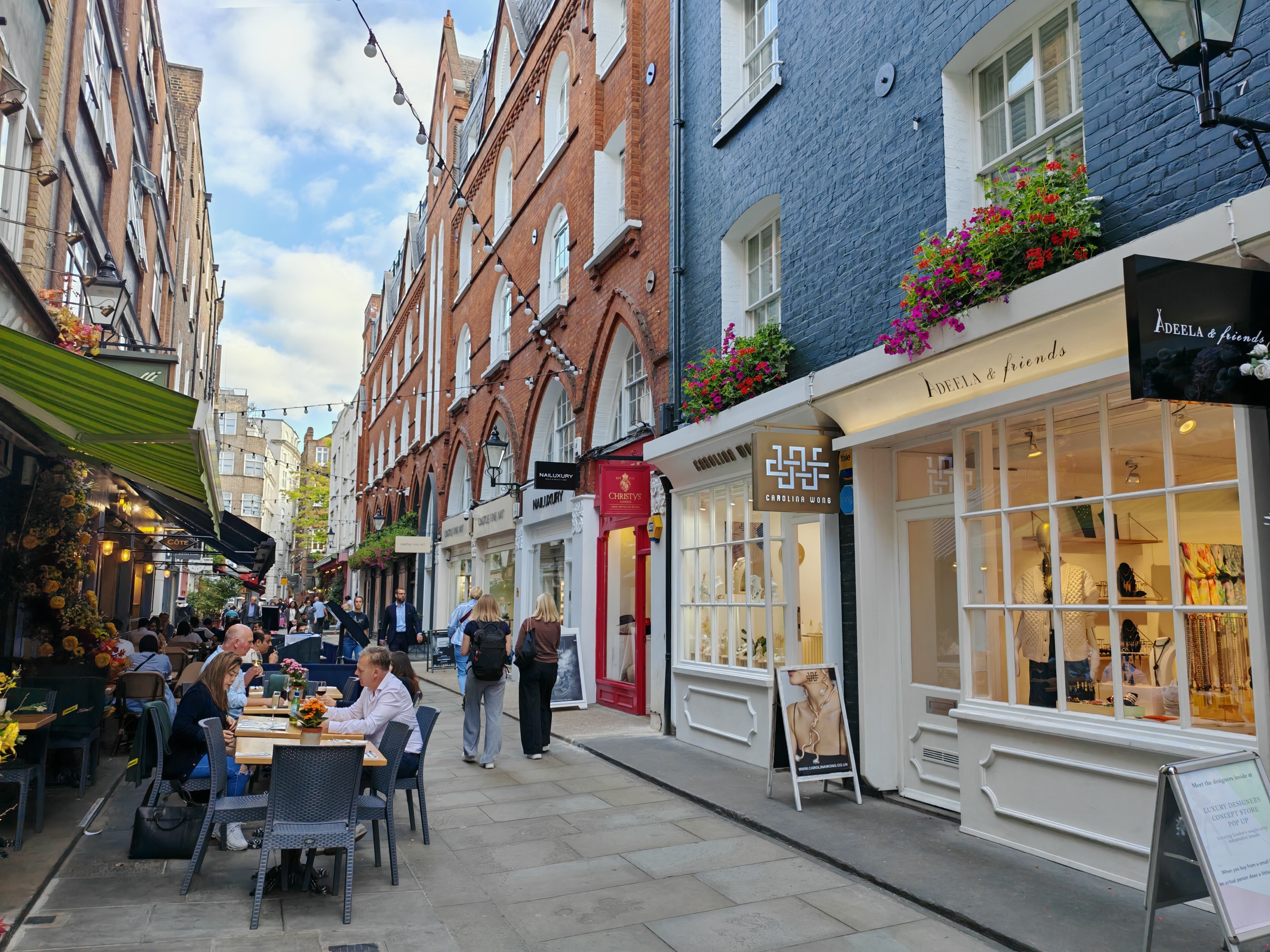
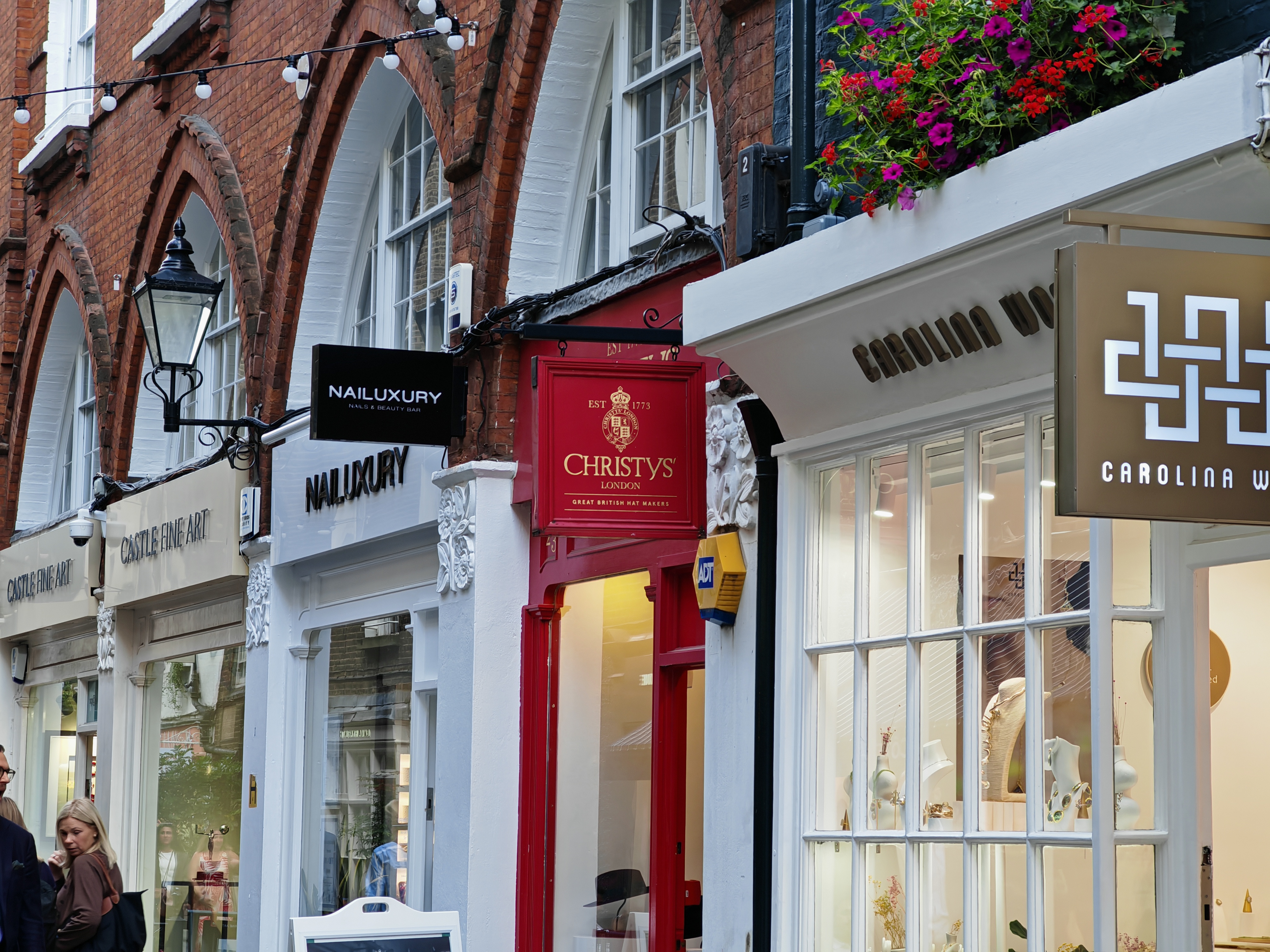
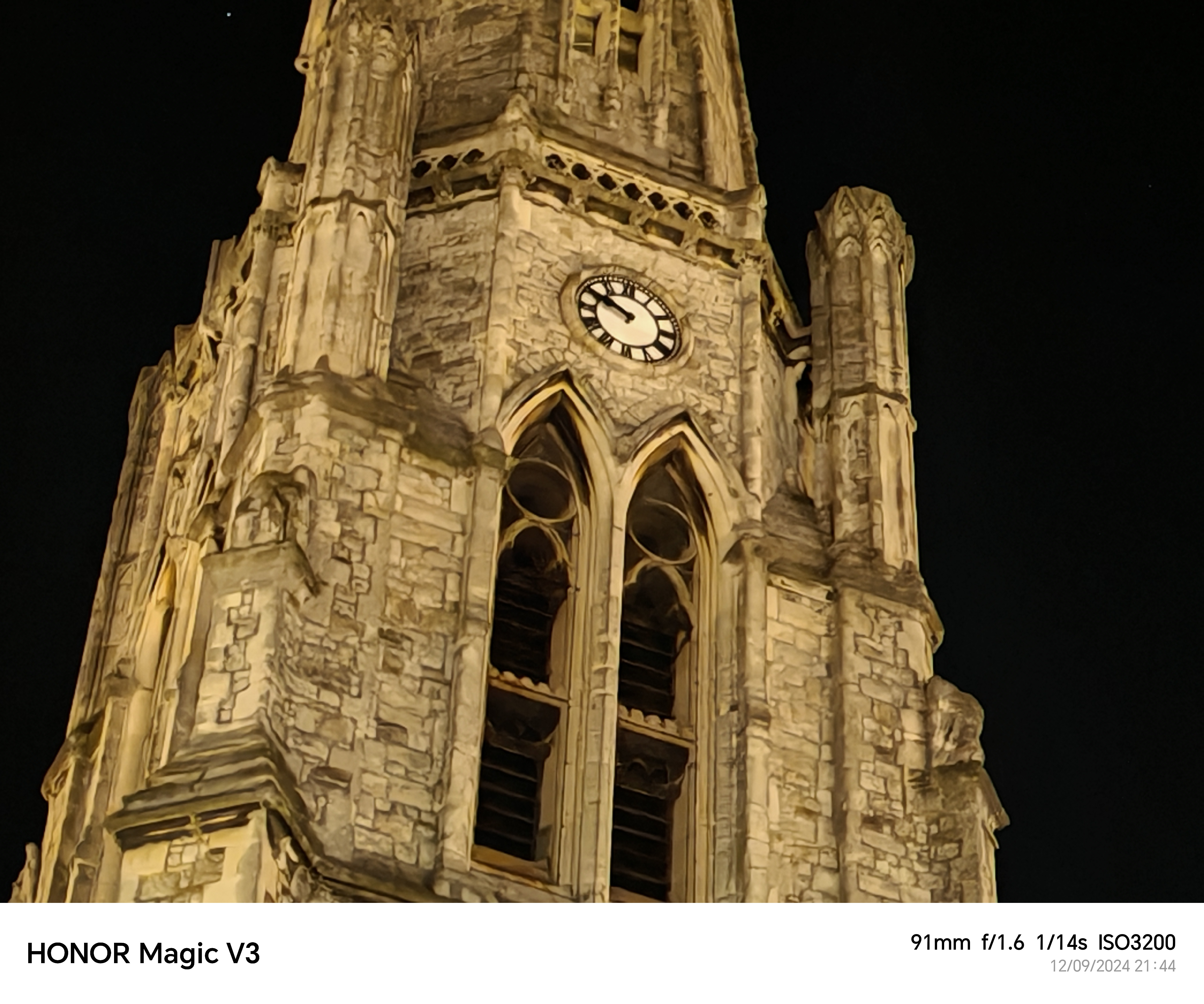
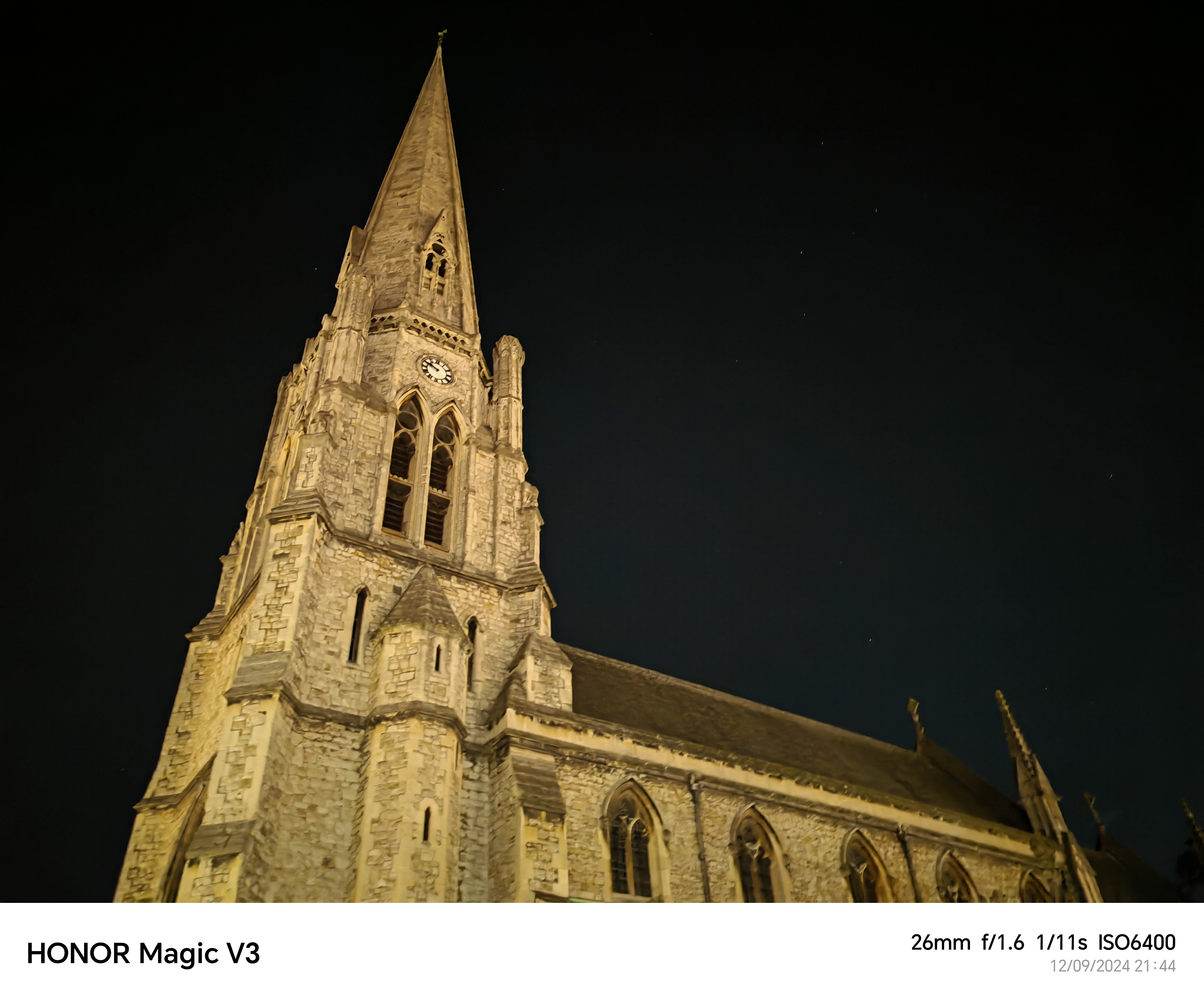
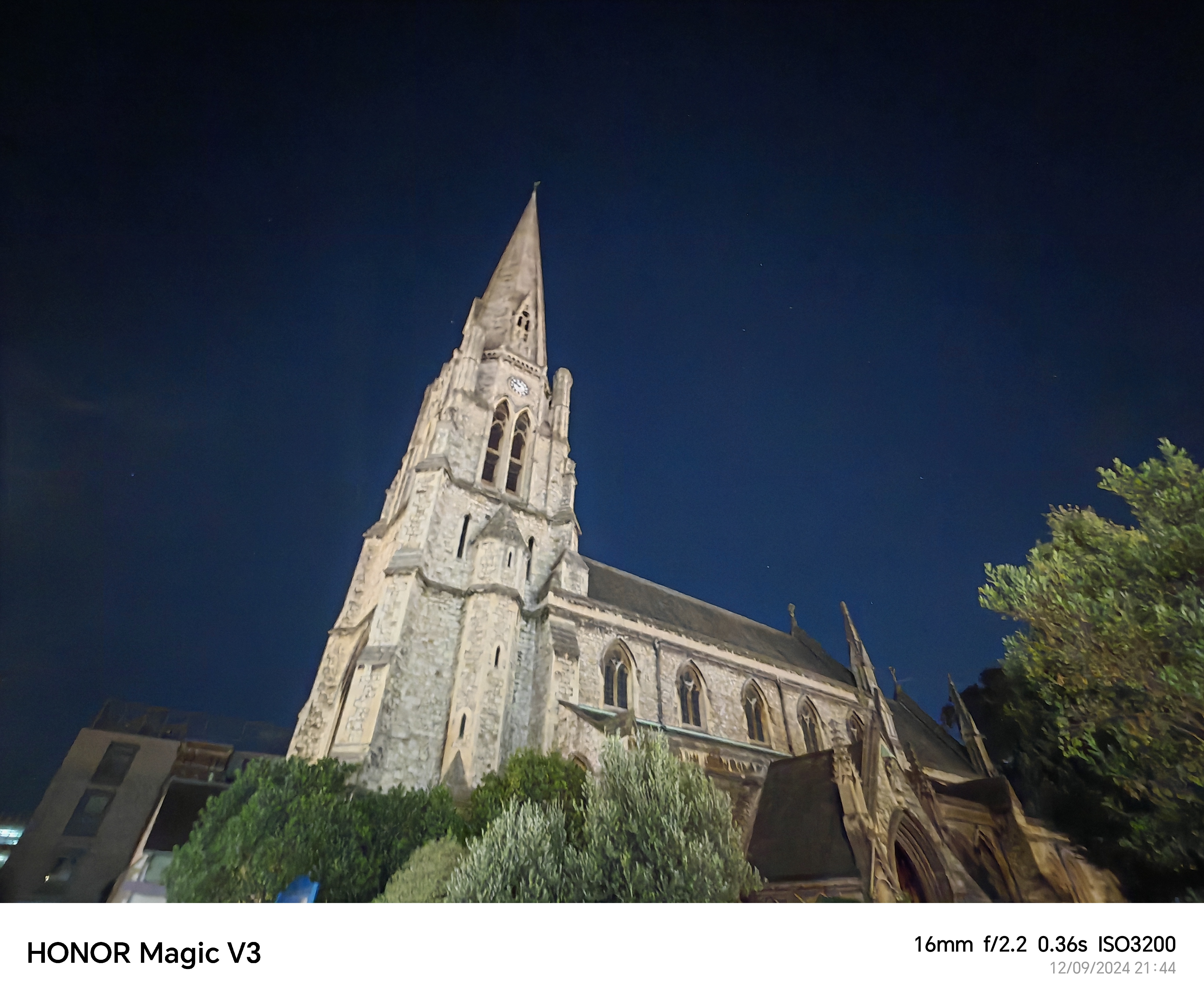
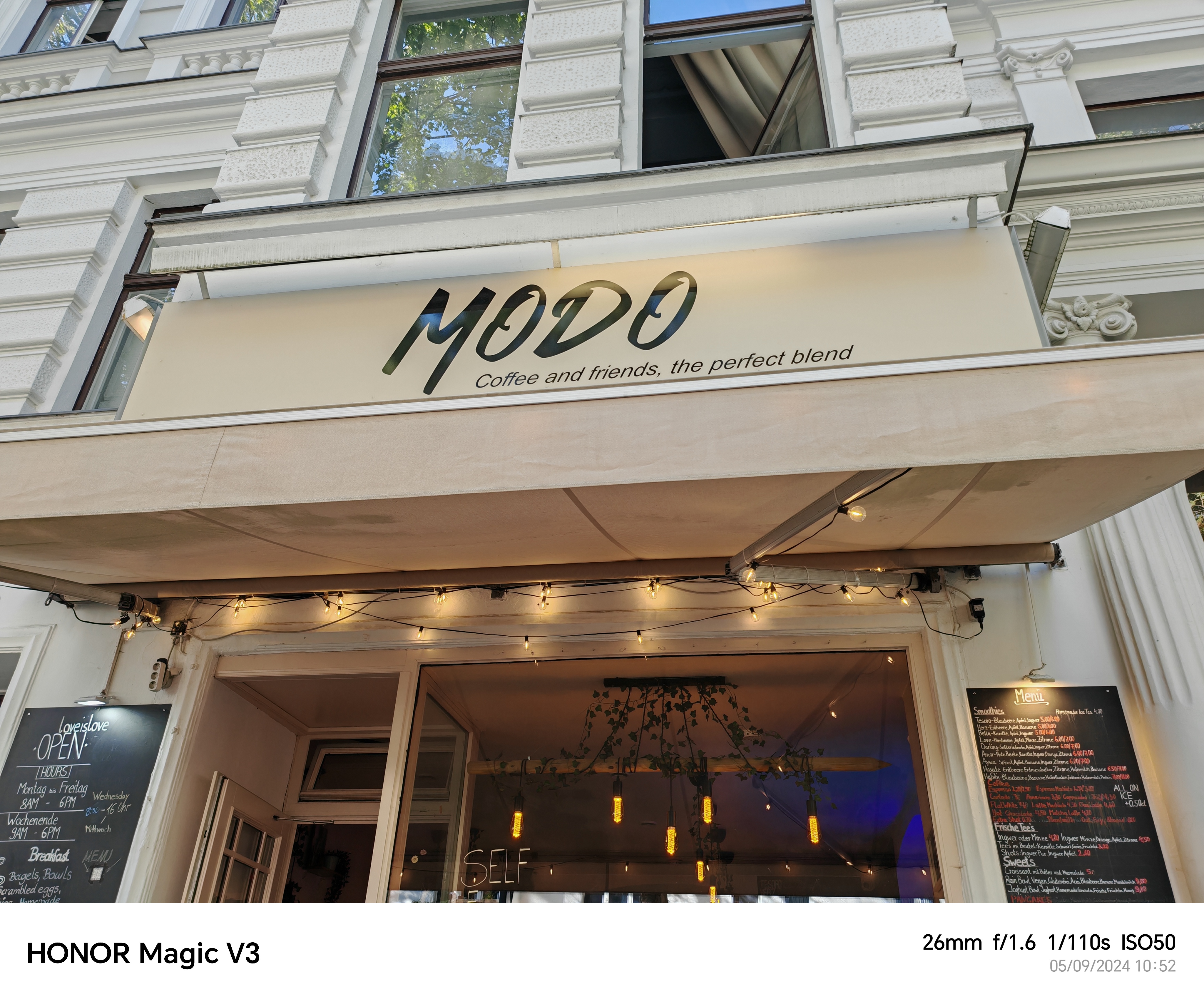


Above: gallery of standard photos we shot with Honor Magic 3
For a foldable, the Magic V3's zoom performance is also exceptional across lighting conditions. While on paper, the Google Pixel 9 Pro Fold has a superior 5x zoom reach, the Pixel's telephoto camera crumbles at night and in challenging scenes. Meanwhile, the Magic V3 holds its own with a combination of optical reach and computational photography.
Our one criticism of night zooming goes back to an overriding criticism of the camera system – variance across cameras is too great – with the church above looking white from an ultra-wide perspective and yellow from a primary and telephoto perspective.
Honor also leans into computational photography to add detail to subjects far away, which can work to great effect. The image goes all the way from 16mm to 919mm, and while the furthest zoomed-in shot is heavily processed, treading into oil painting territory, it's also much more usable than a shot from a pricier Z Fold 6.

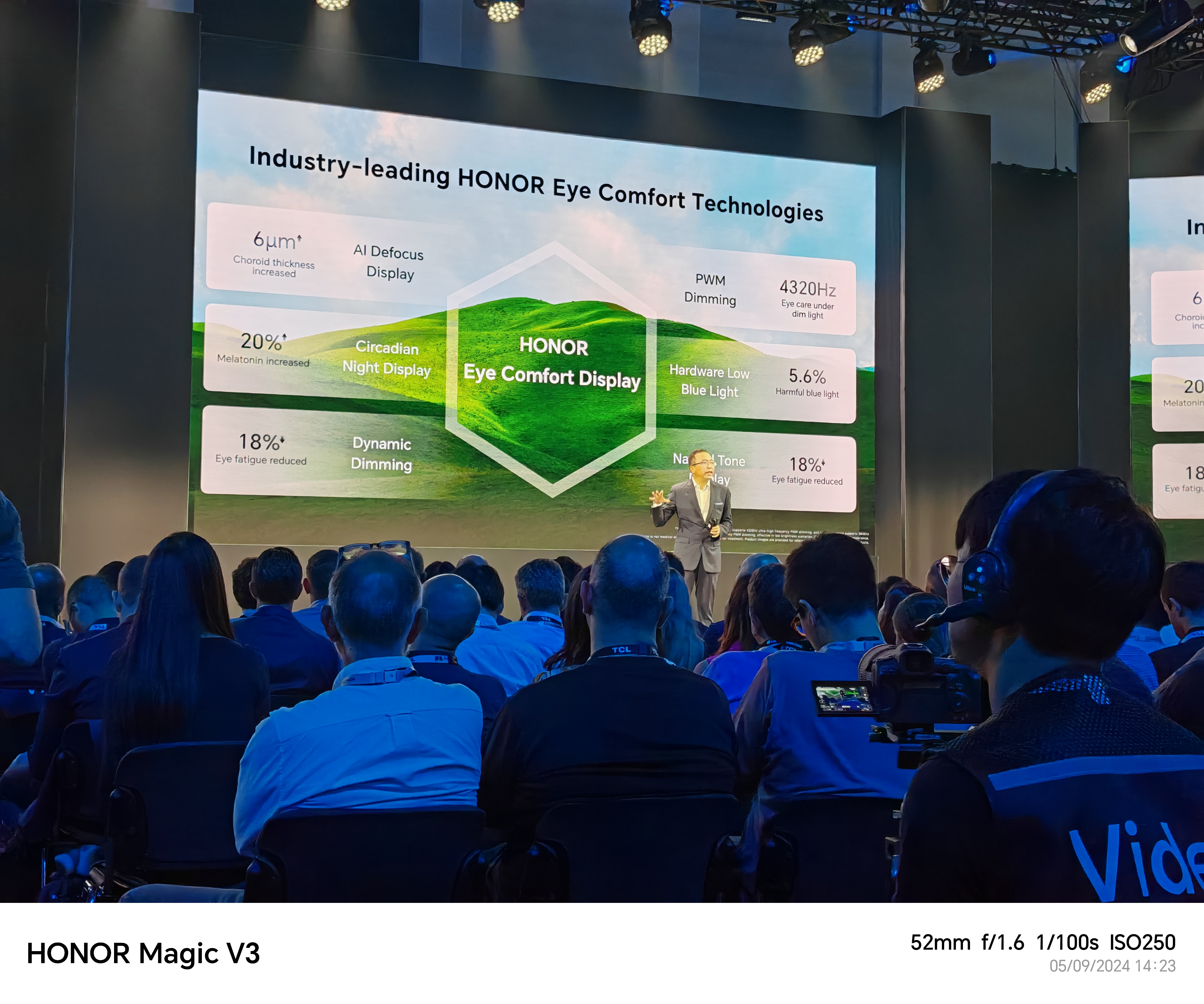
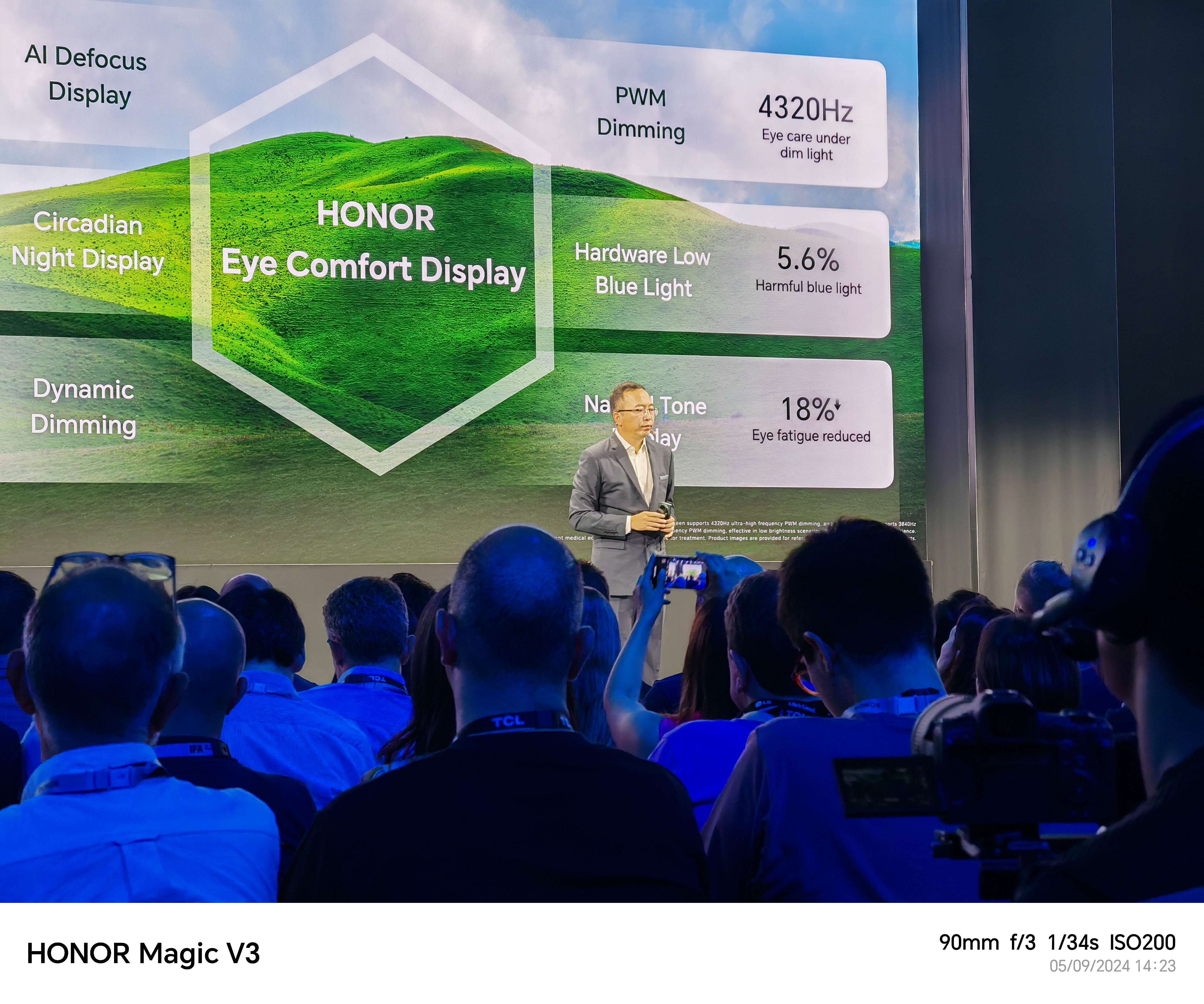
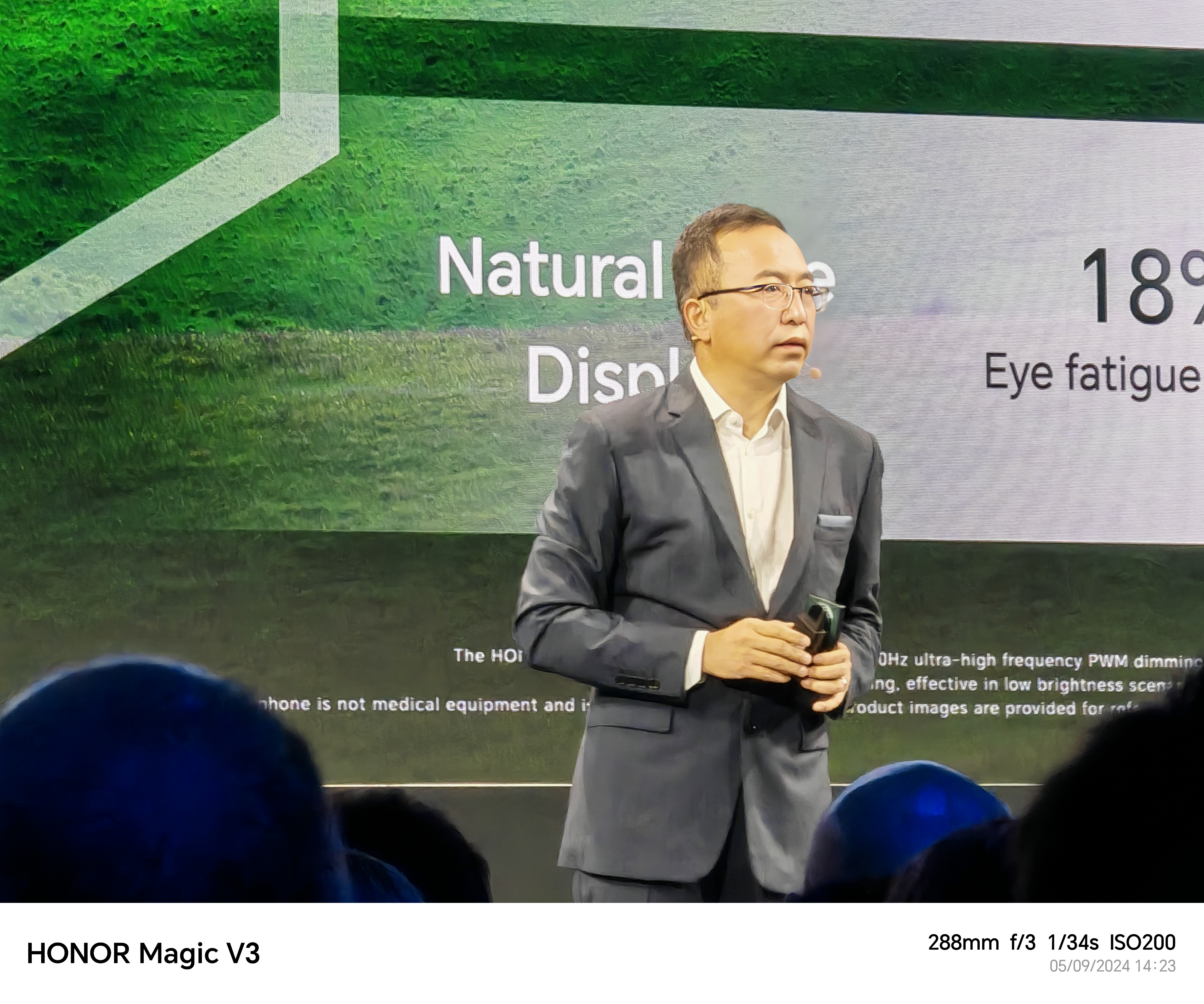
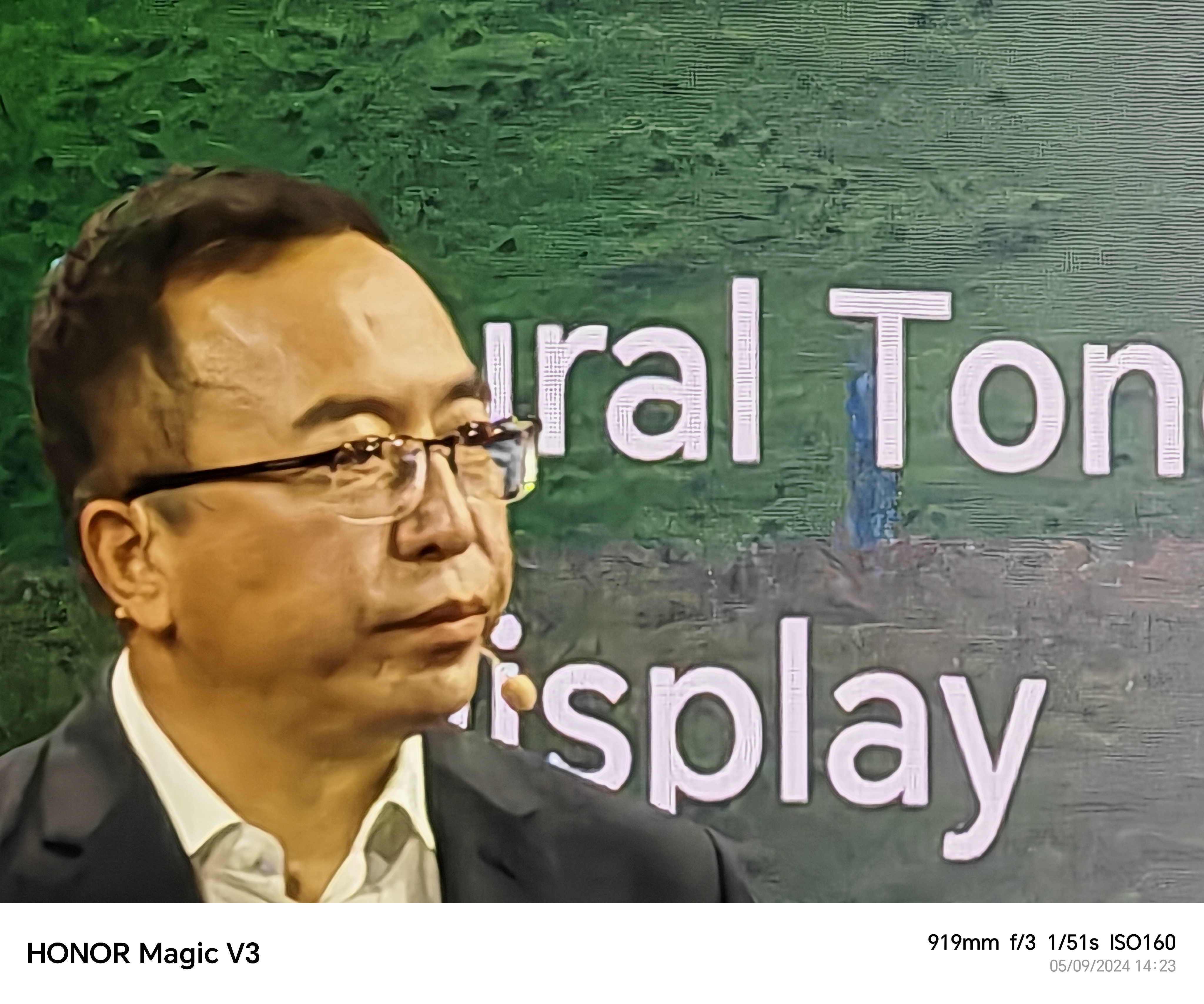
Above: gallery of images showing the camera's zoom capabilities
This zoom versatility means the Honor Magic V3 feels more like a camera system than three standalone cameras – we happily jumped between lenses without worrying about quality when taking a quick snap – though not everyone will love Honor's default color profile.
The Magic V3 has three color profiles: Natural, Vibrant, and Authentic. Colors across all three range from unctuous and deep to zingy and vibrant. Natural was unsurprisingly the most neutral, so it tended to be our choice. Whichever you shoot in, though, there's no getting around Honor's stylistic take on photography unless you fire up manual mode.
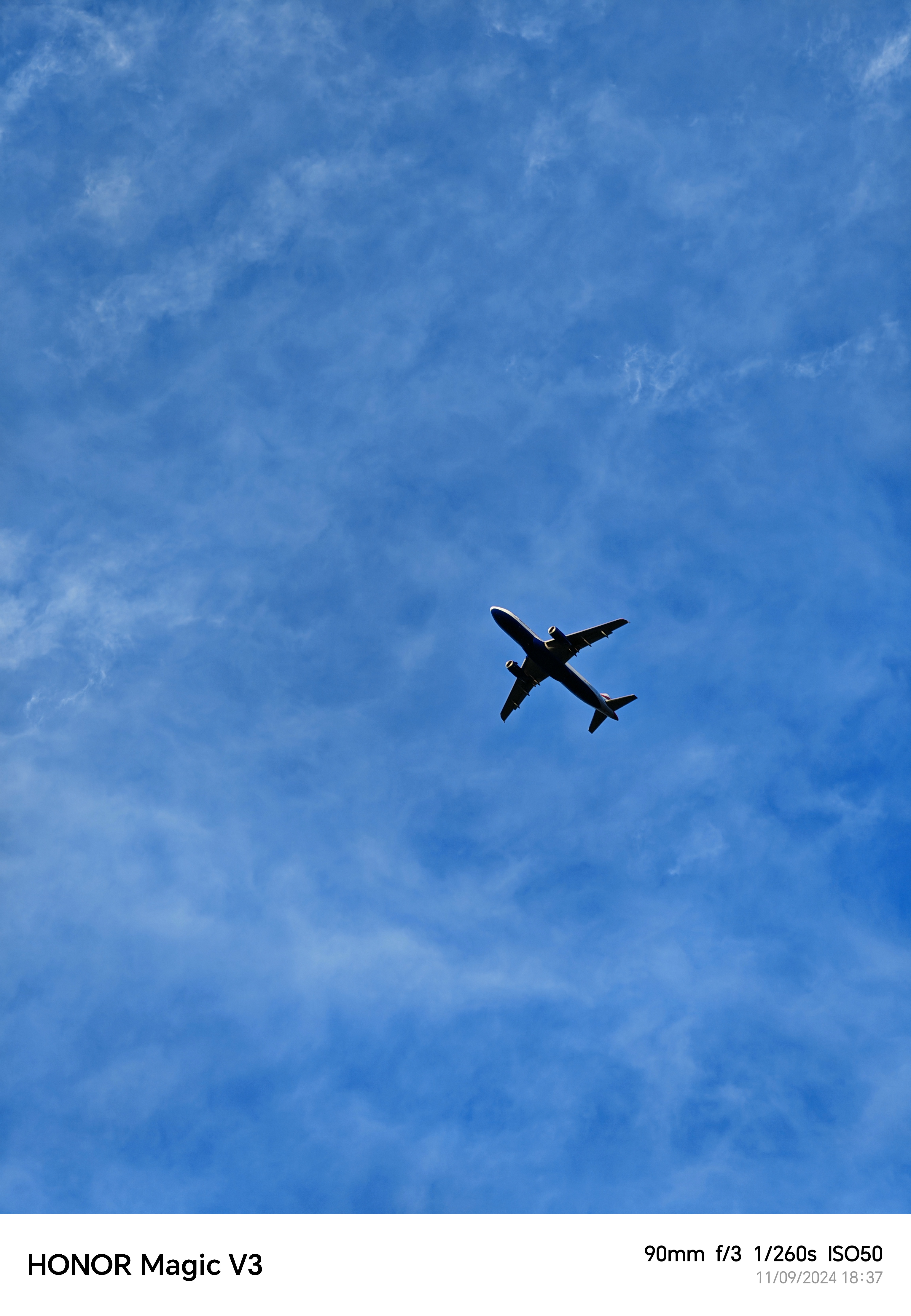
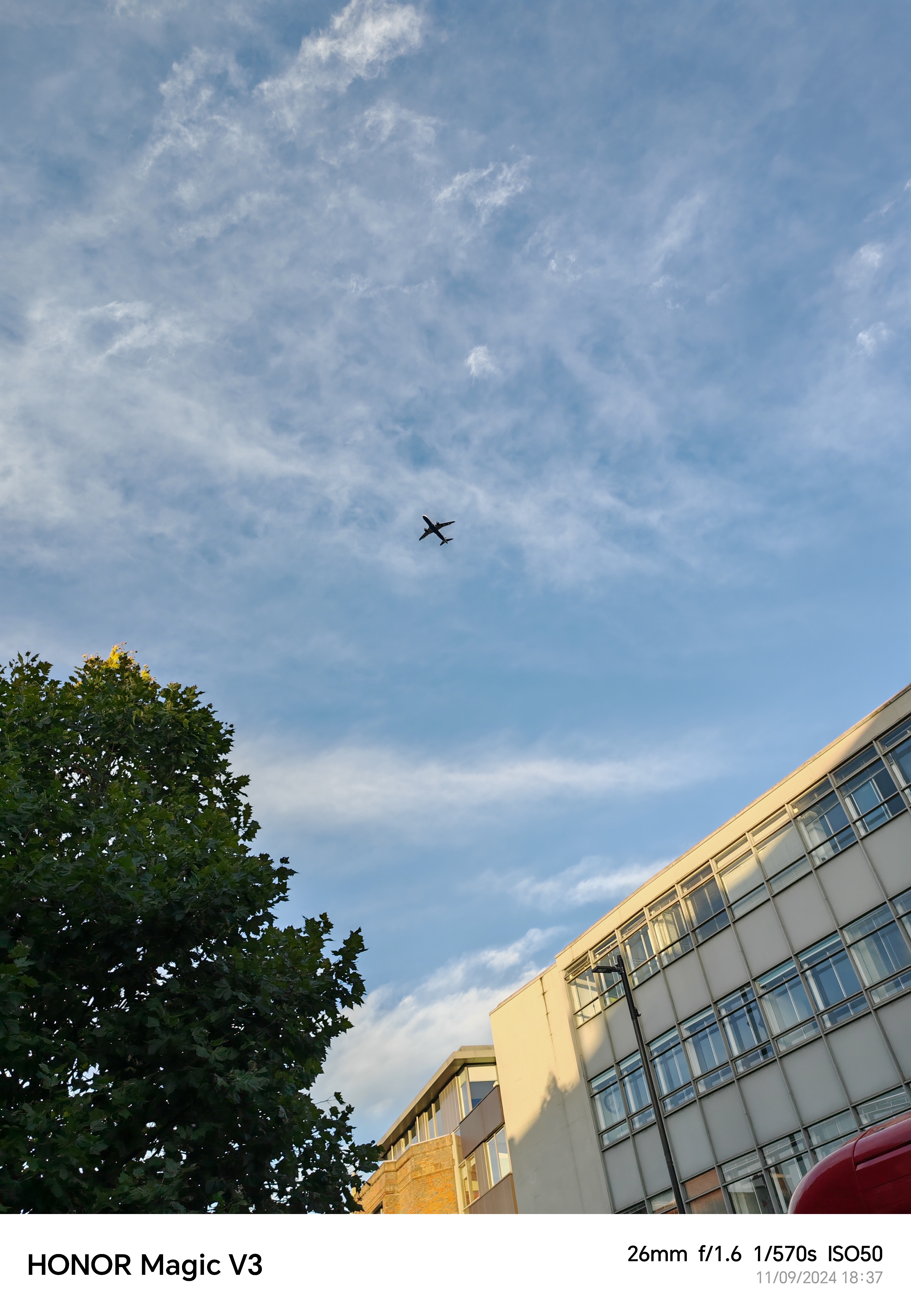
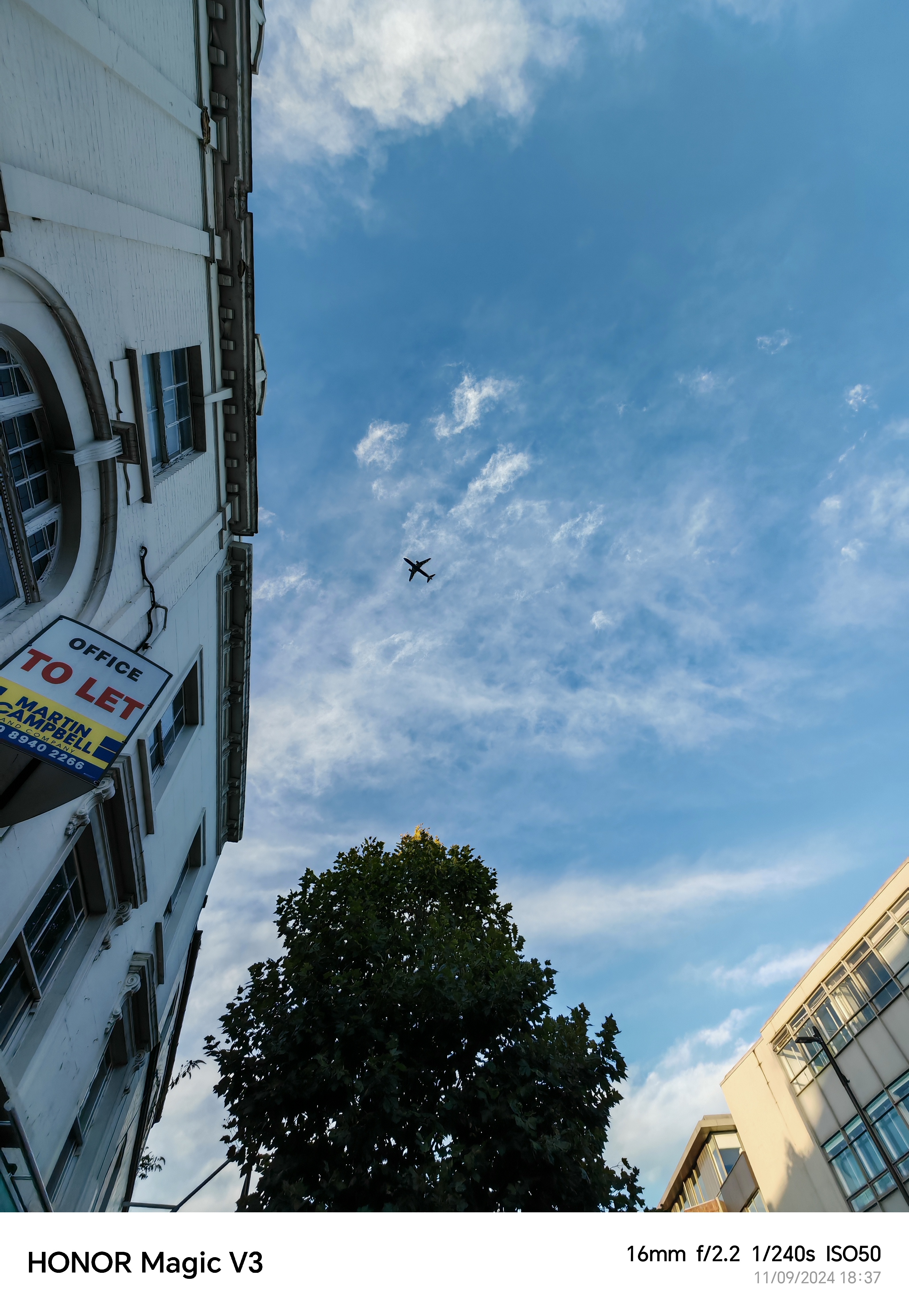

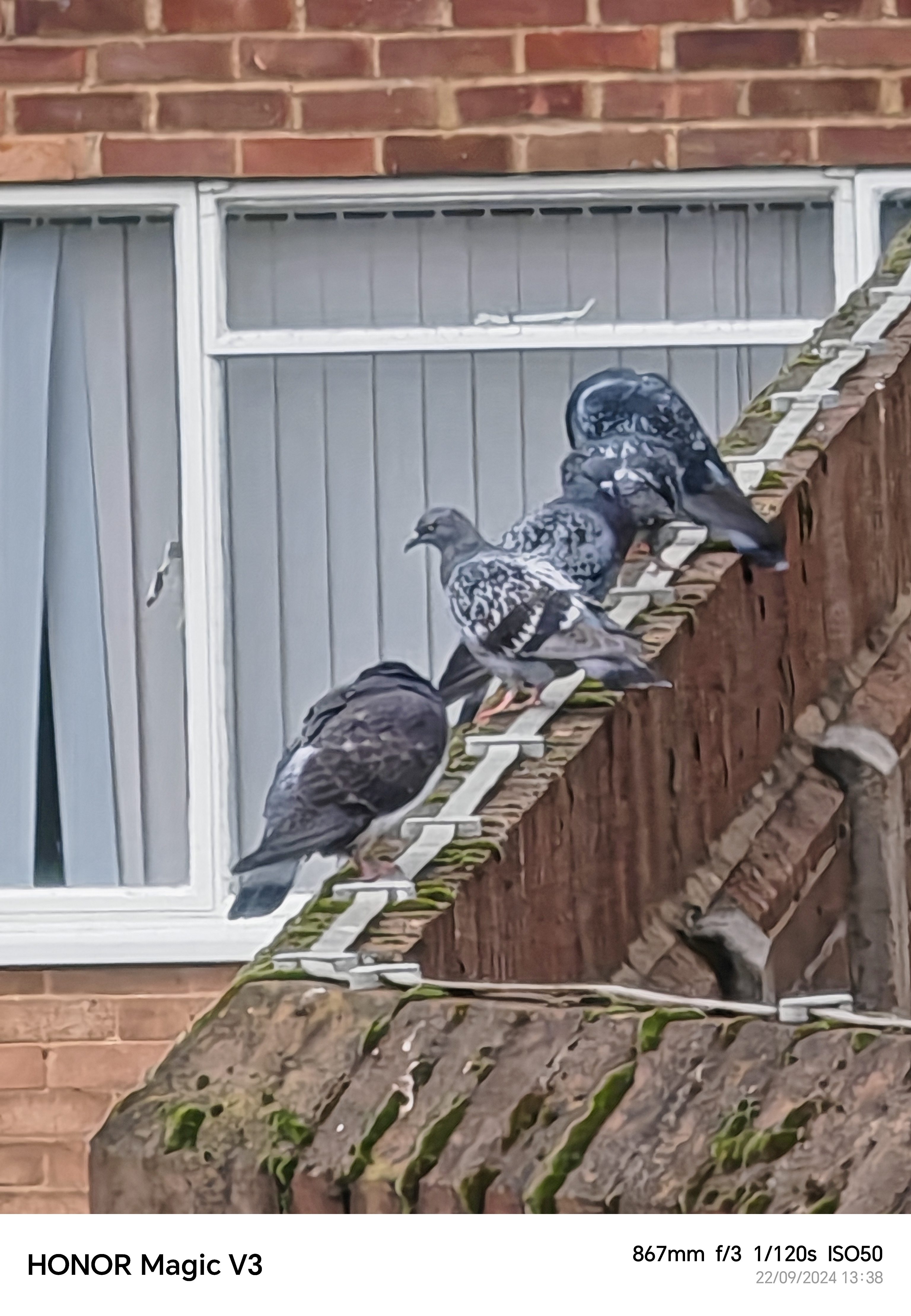
The Magic V3's video, which is recorded at up to 4K resolution, 60fps is similarly stylized, though generally looks good when the lighting is right, with crisp details and nippy focus.
When the lights drop, as with most phones, video is the first to take a hit, particularly across the ultra-wide and telephoto cameras, though Supernight video extends the shutter speed for the primary camera and helps salvage clips caught in lowlight at up to 24fps, 1080p.
Honor Magic V3 Additional Features
The Honor Magic V3's AI features may fall behind Samsung's, however, Honor has added some meaningful software updates to help the V3 improve the experience over the Magic V2. For starters, there's a taskbar for easier multitasking – overdue, but welcome nevertheless – and Honor's also bringing back its Magic Capsule for quick access to features like media playback (similar to Apple's Dynamic Island).
A new feature, Magic Portal also adds drag-and-drop access to favorite apps, so you can highlight an address and drag it into the side of your phone to quickly paste it into Google Maps or long-press a photo to quickly drag it into the side of your phone and send it to WhatsApp. This shaves off a couple of steps when compared to the standard Android share feature, and while unnecessary, we ended up using it frequently.
The unfolded big screen is also a perfect match for apps like Lightroom and Lumafusion, making the Honor Magic V3 a winning photo and video editing tool. Even non-creative apps like OneNote and WhatsApp benefit from a multi-panel view.
Running Android 14 with a promise of four years of OS updates and five years of security updates, the software support promised falls behind that of Samsung and Google. That said, from a hardware point of view, longevity is also dictated by storage and battery life, two areas the Magic V3 pulls ahead.
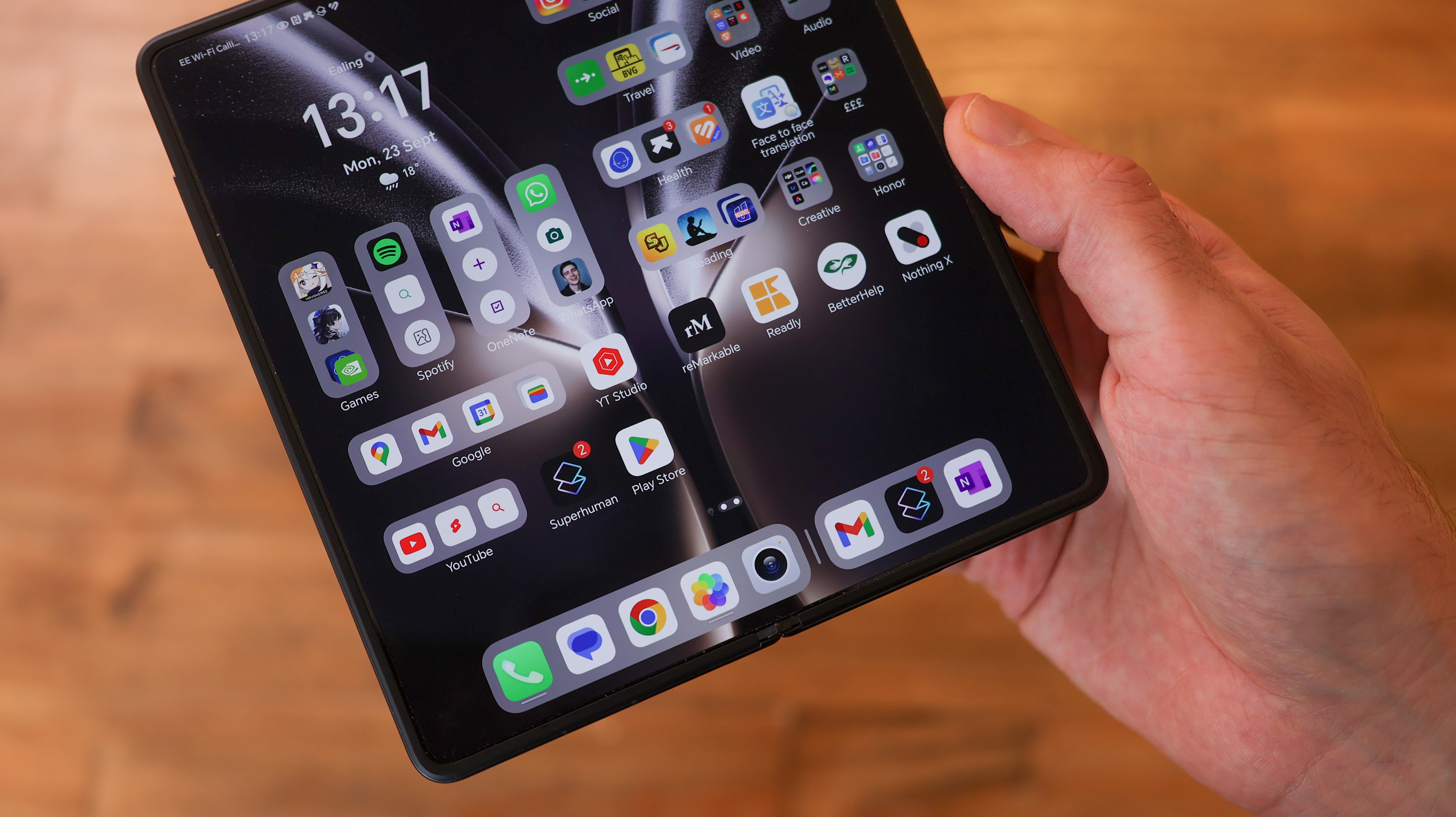
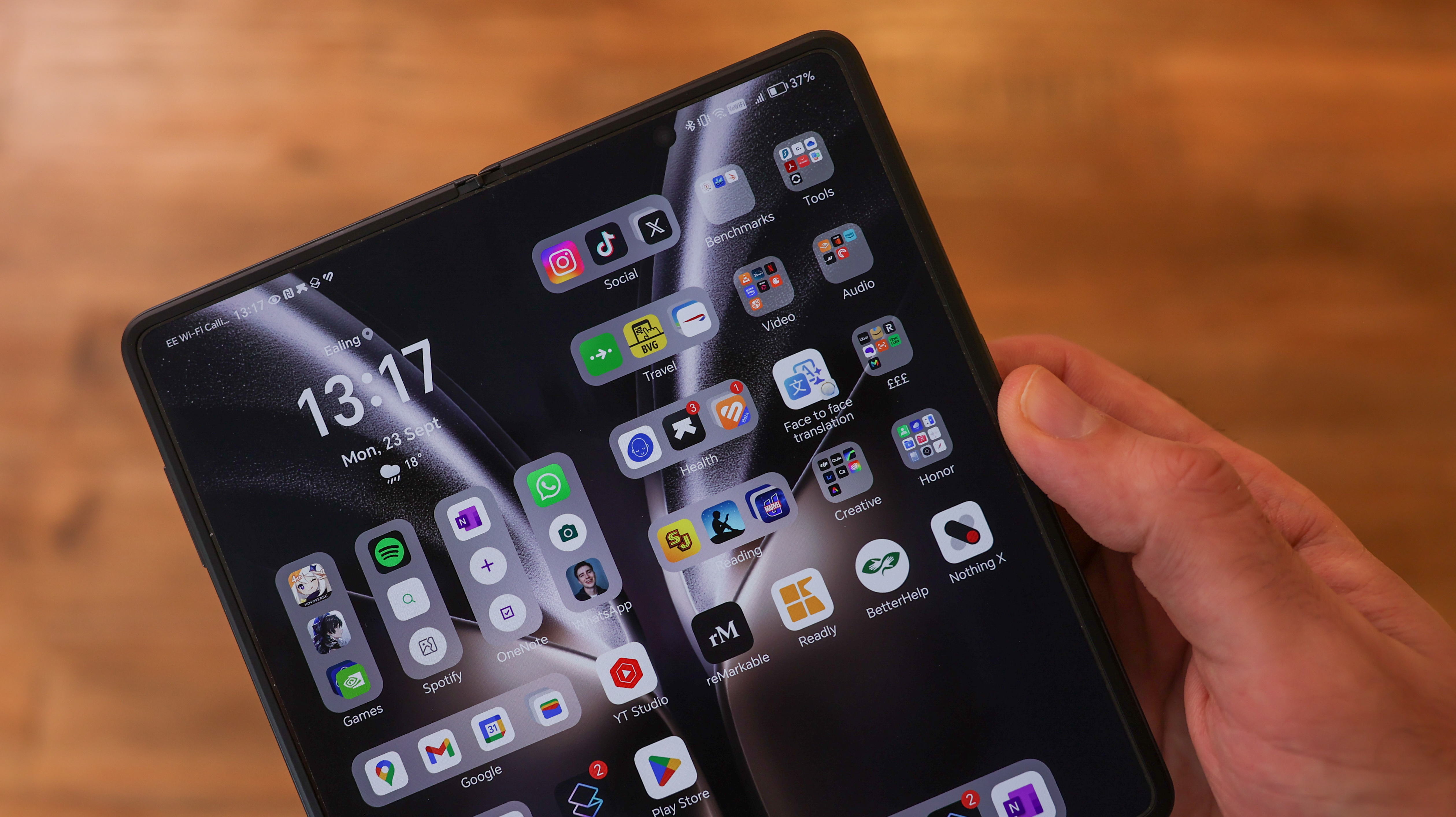
The phone's Qualcomm Snapdragon 8 Gen 3 chipset is also noteworthy. It puts the Honor Magic V3 on par with the Samsung Galaxy Z Fold 6 on paper, making both the most specced-out foldables currently available in the West.
The Magic V3 takes advantage of this power with multitasking, which can be activated with a split-screen view and floating windows, and it also supports desktop mode when connected to an external display via USB-C.
With 512GB storage, Honor gives customers double the starting capacity as found in the Z Fold 6 and Pixel 9 Pro Fold, and the phone also has 12GB RAM.
Honor also has its own take on the AI tools Samsung introduced on the S24 series, including transcriptions from voice notes, AI translation and interpreting, and photography-focused tools like AI Eraser.
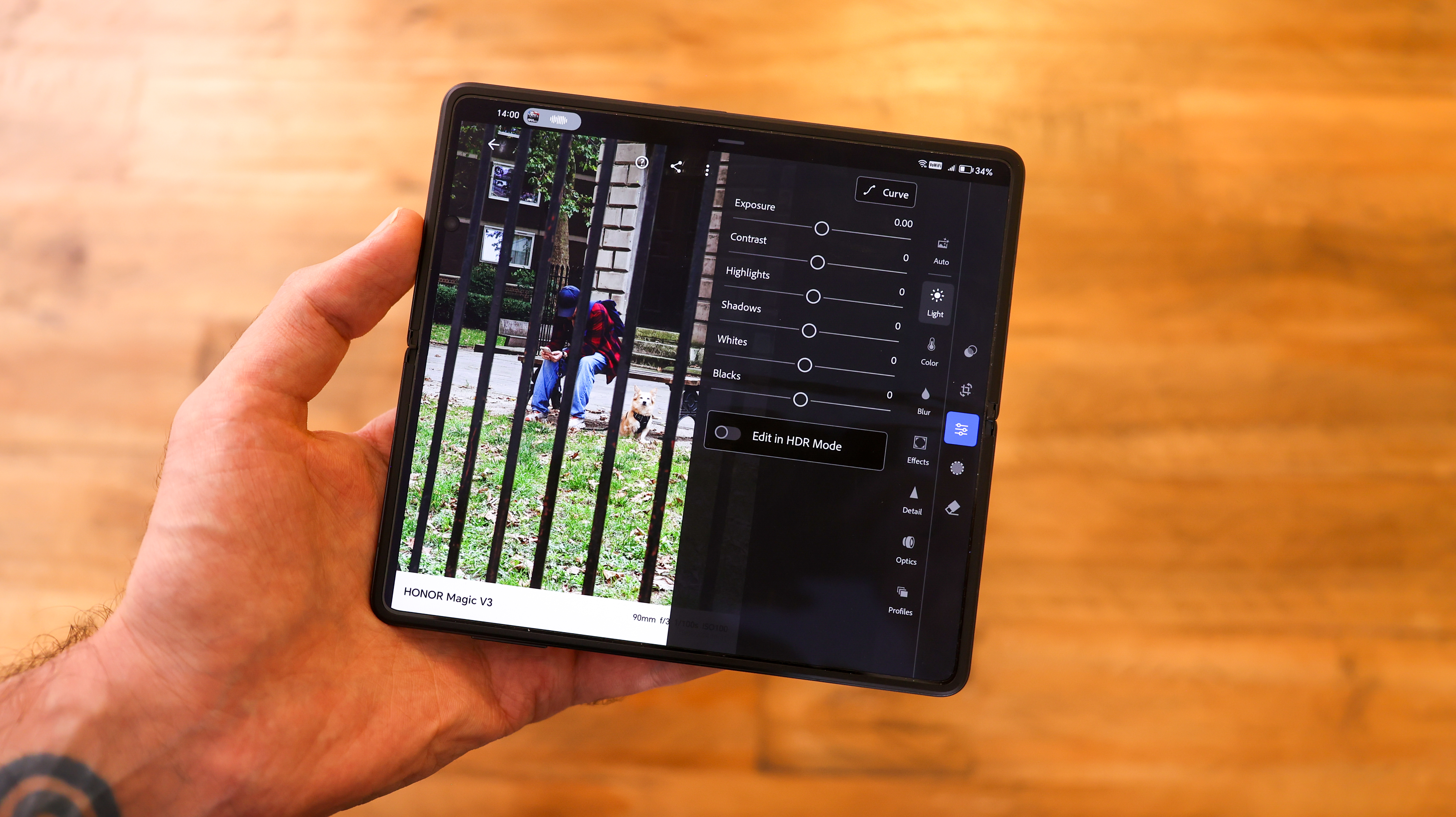
What underpins a phone's user experience more than AI features, though, is battery life, and the Honor Magic V3's large 5150mAh capacity cell keeps it alive for a full day. This is especially true when using the smaller cover screen, with performance besting most other foldables we've tested, though heavy big screen use drains the battery significantly faster and might leave you low before the day is done.
The Magic V3 also charges at a much faster rate than the competition, with 66W wired charging achieving a full charge in around 45 minutes and 50W wireless charging taking about 30 minutes longer.
The phone doesn't ship with a charging brick or a wireless charger, so you will need to buy specific Honor accessories to hit those top speeds, which might be a tough pill to swallow given the foldable's price. It's worth mentioning, though, that this is the case with all the V3's pricier competitors, too.

Honor Magic V3 verdict
The Honor Magic V3 is a powerful, good-looking, slender foldable that undercuts the competition while arguably offering more. That doesn't mean it's cheap, but it does mean it's a better value package.
While foldables typically compromise on camera quality, and the Magic V3 is no exception compared to the flagship Honor Magic 6 Pro, the V3 nevertheless remains one of the best foldable camera phones on the market.
Key camera highlights include a suite of shooting modes, including Studio Harcourt portrait mode, which fast-tracks stylized black-and-white photography, and reliably crisp shots from 16mm to 90mm and beyond. While photo processing across cameras can be inconsistent, the Magic V3 nevertheless edges ahead of Google and Samsung's 2024 foldable camera phones.

While we still prefer the OnePlus Open's camera system, with the Honor Magic V3 packing fresher specs, much slimmer styling, a higher-capacity battery, wireless charging, and IP-rated water resistance, it's our new foldable to beat.
Anyone who specifically wants the best camera phone of 2024 will still be better served with a traditional slab phone like the Google Pixel 9 Pro or Xiaomi 14 Ultra. But foldable fans in Europe, the UK, and other regions Honor phones are available should definitely consider the Magic V3.
Basil Kronfli is a freelance technology journalist, consultant, and content creator. He trained in graphic design and started his career at Canon Europe before moving into journalism. Basil is also experienced in video production, independently running the YouTube channel TechEdit, and during his time at Future, he worked alongside the Digital Camera World team as a senior video producer.
